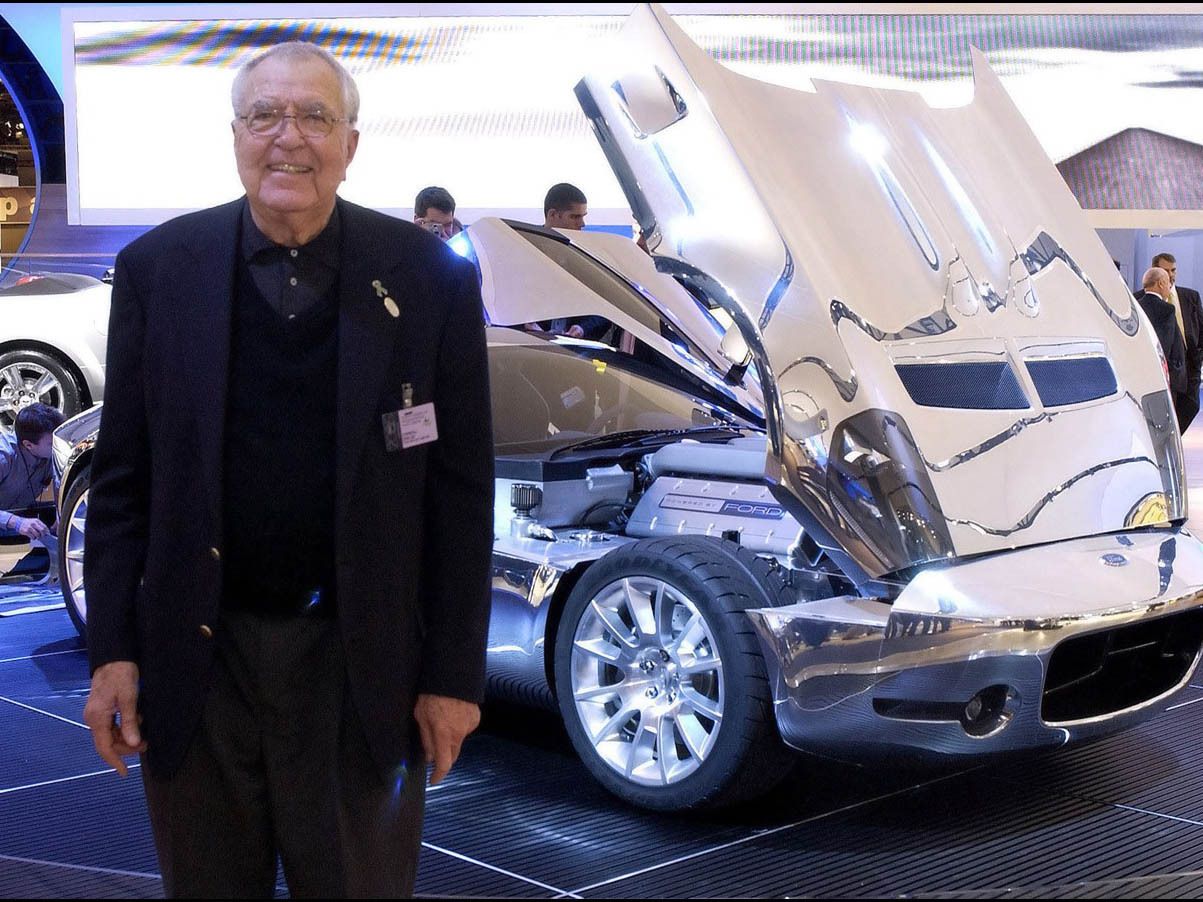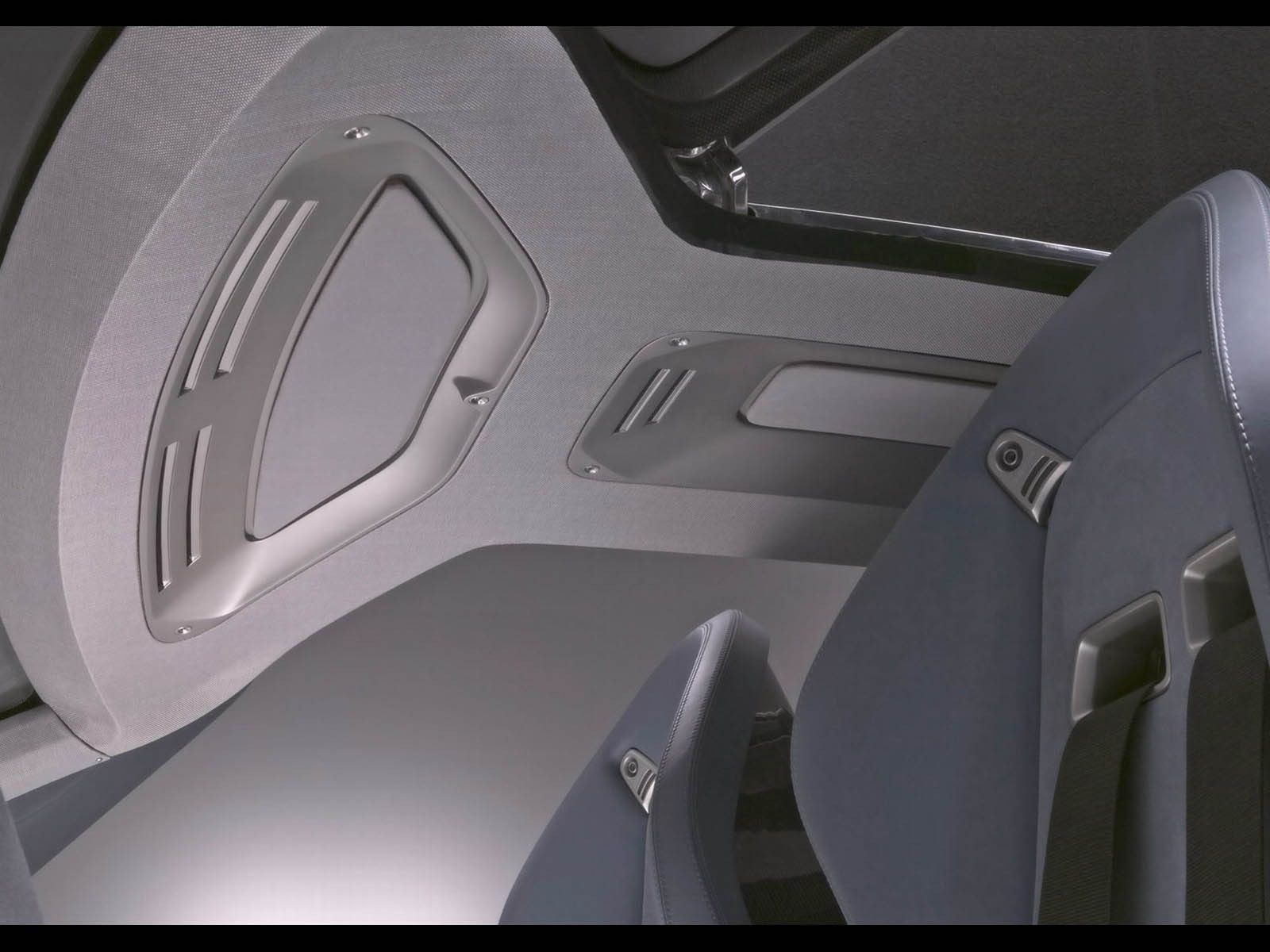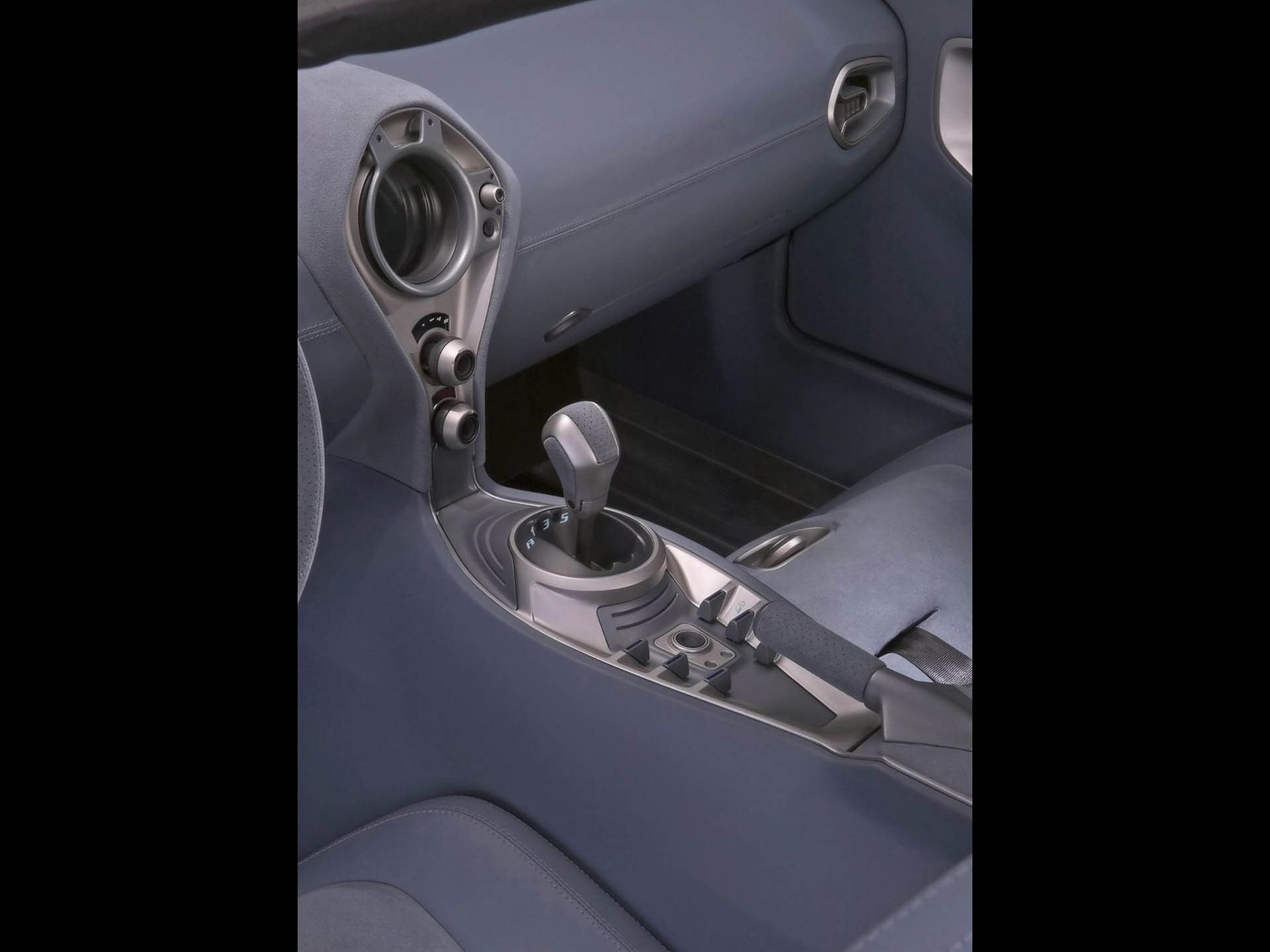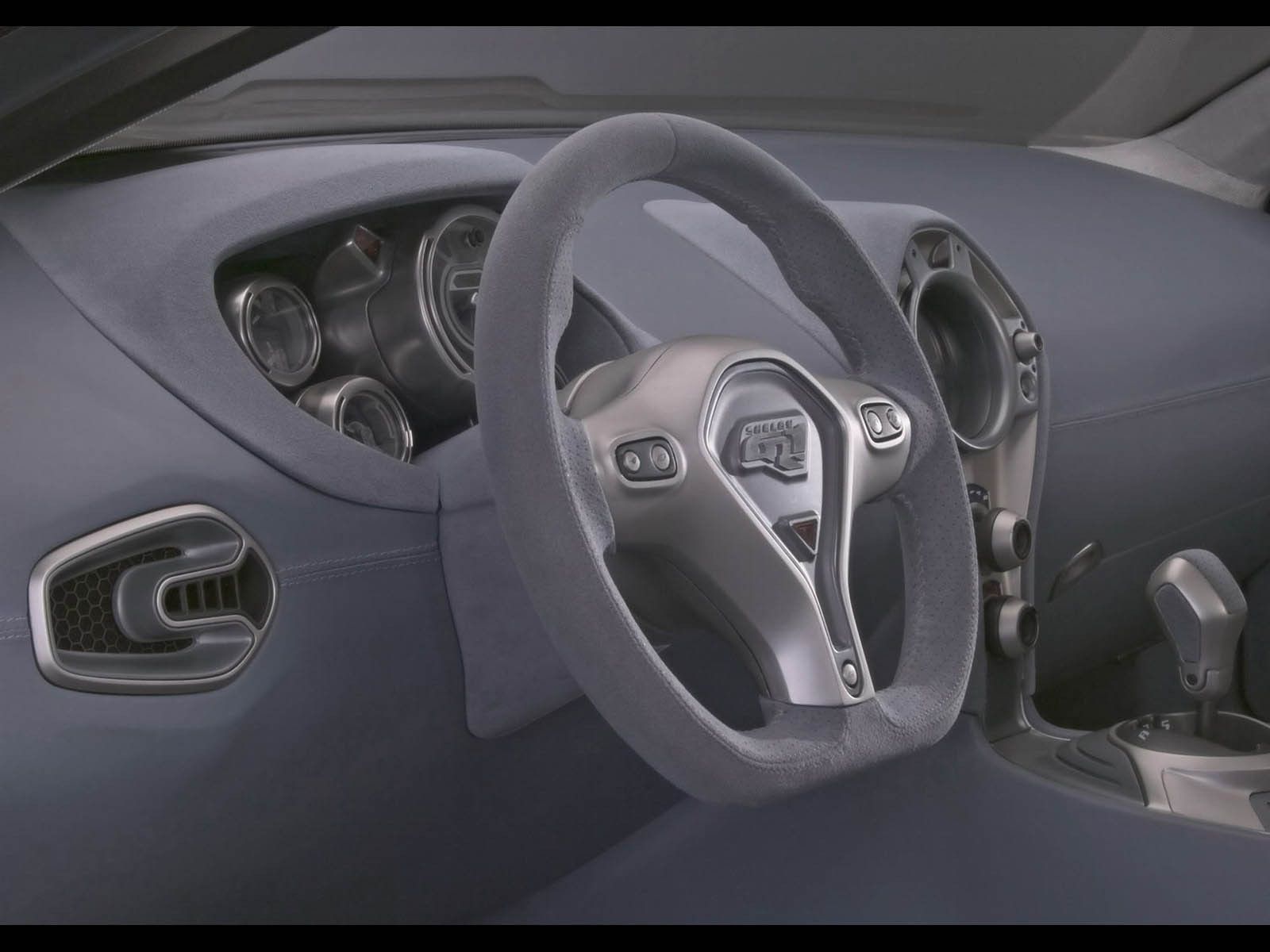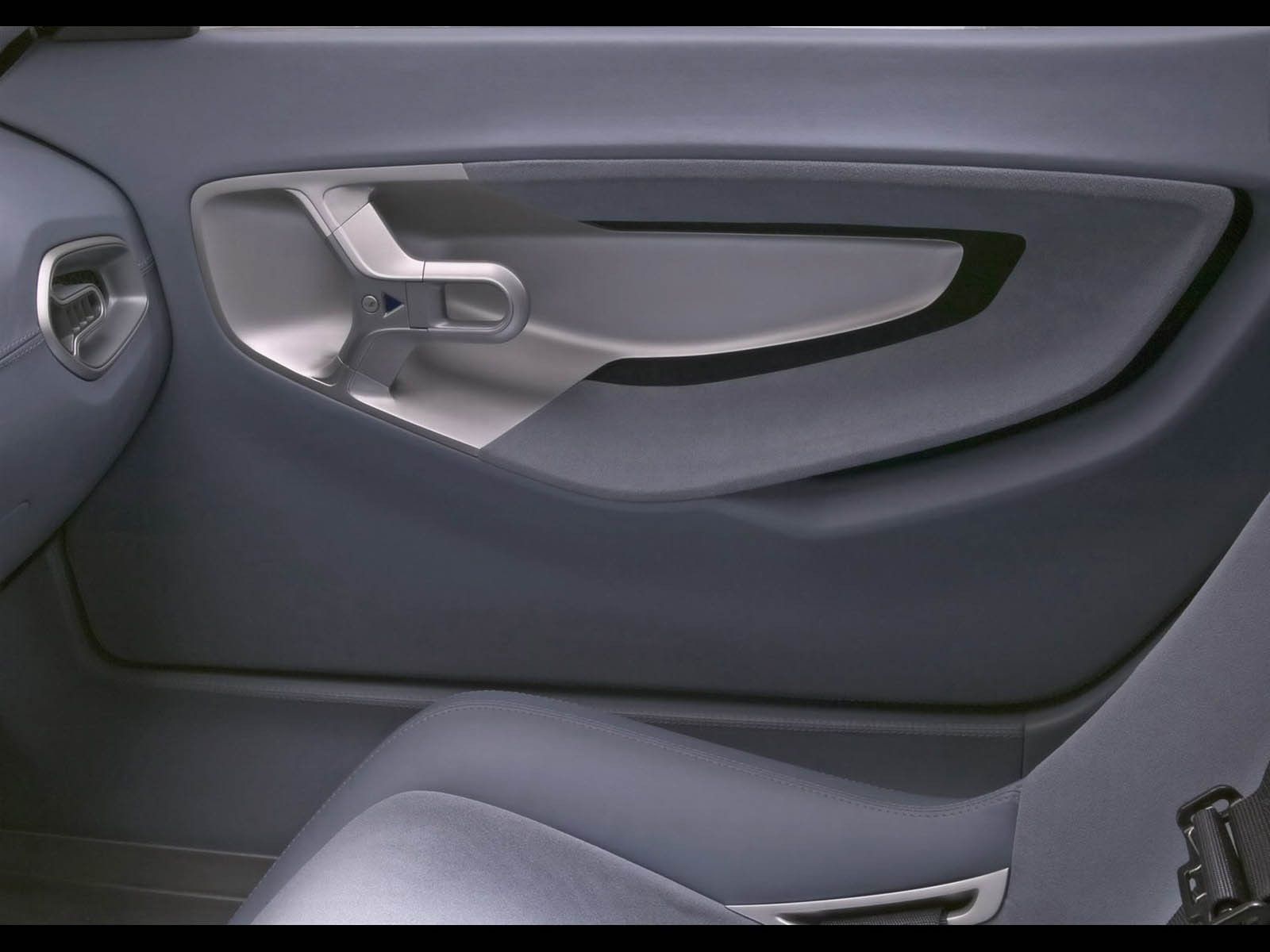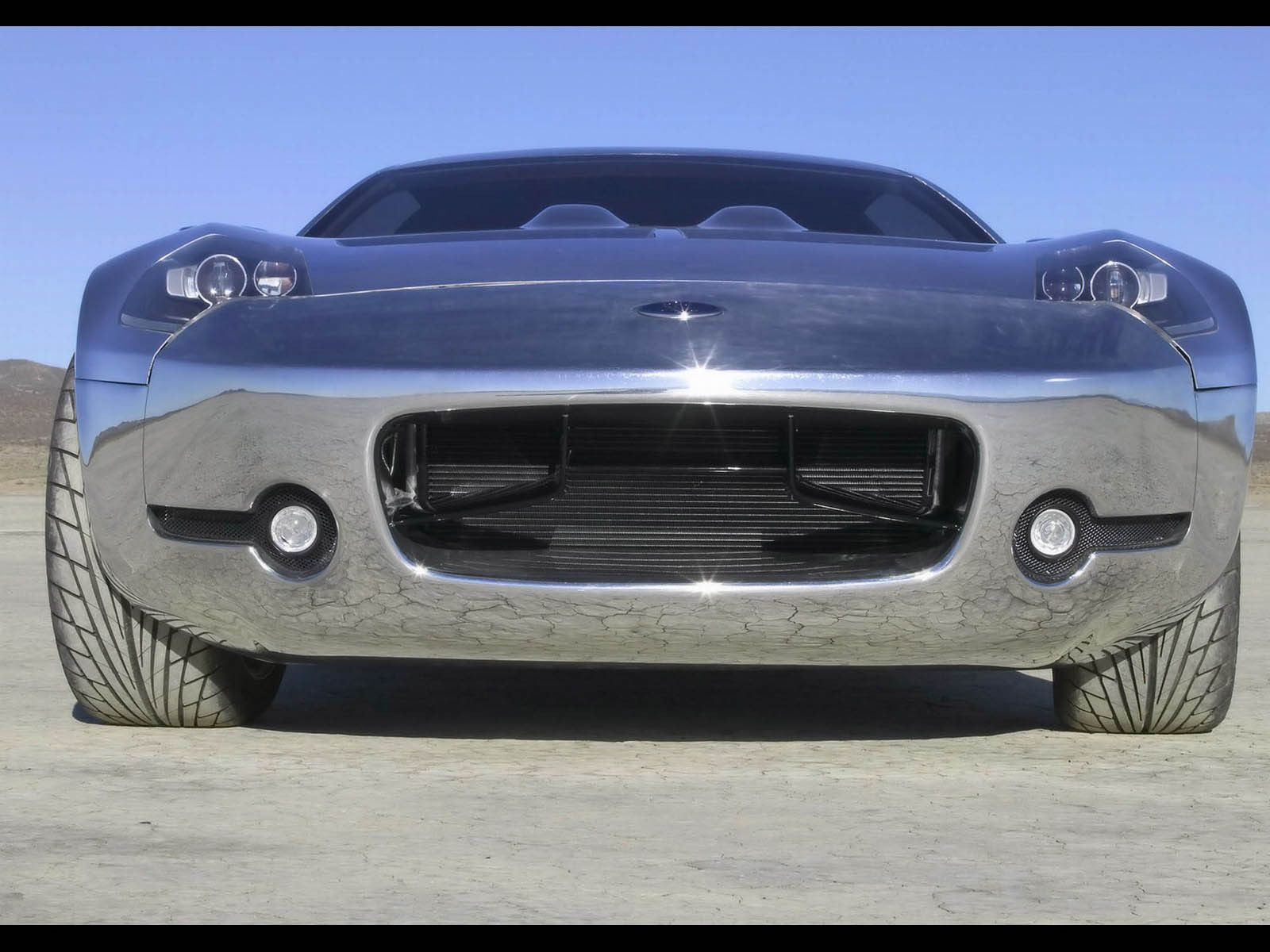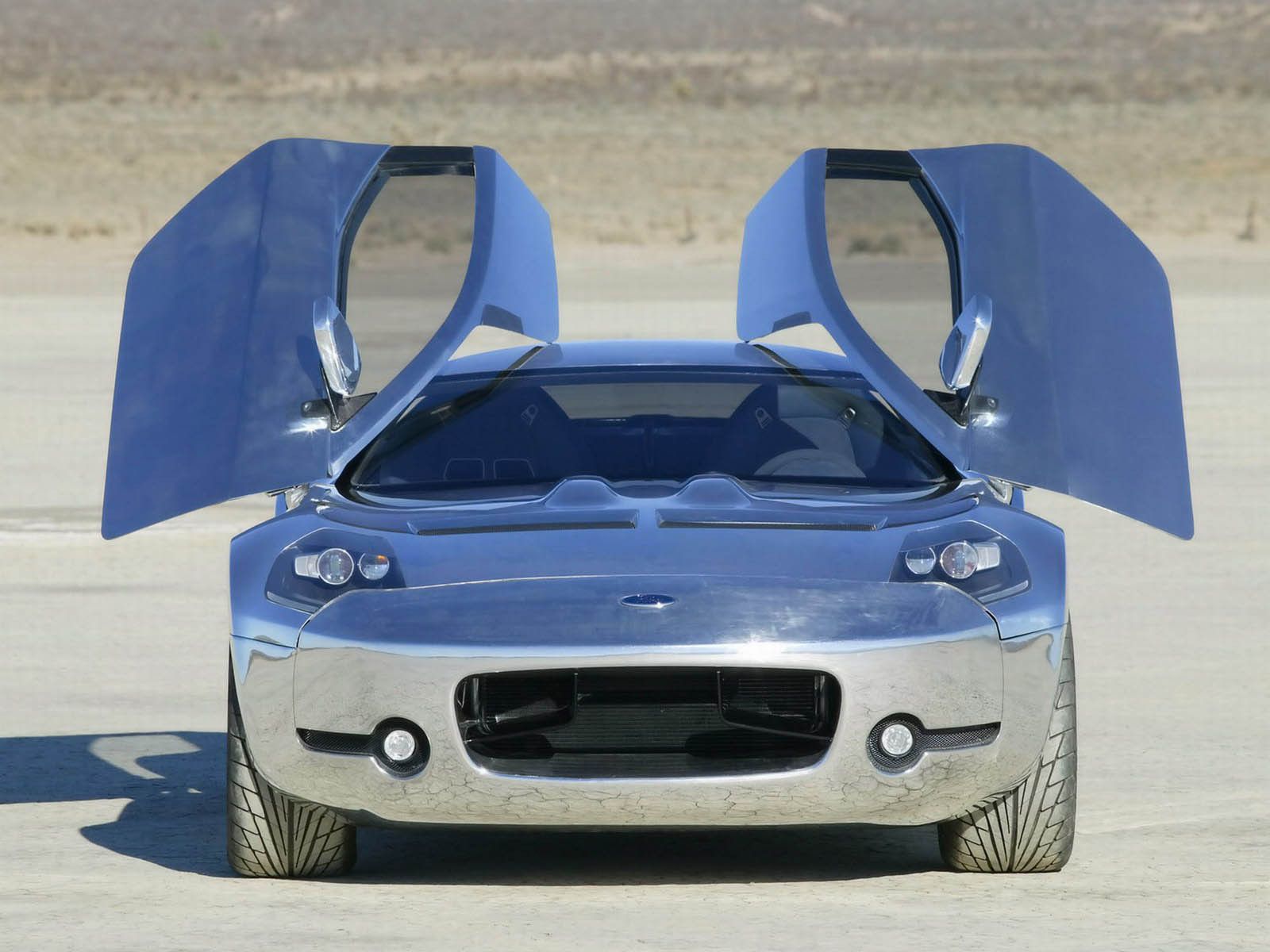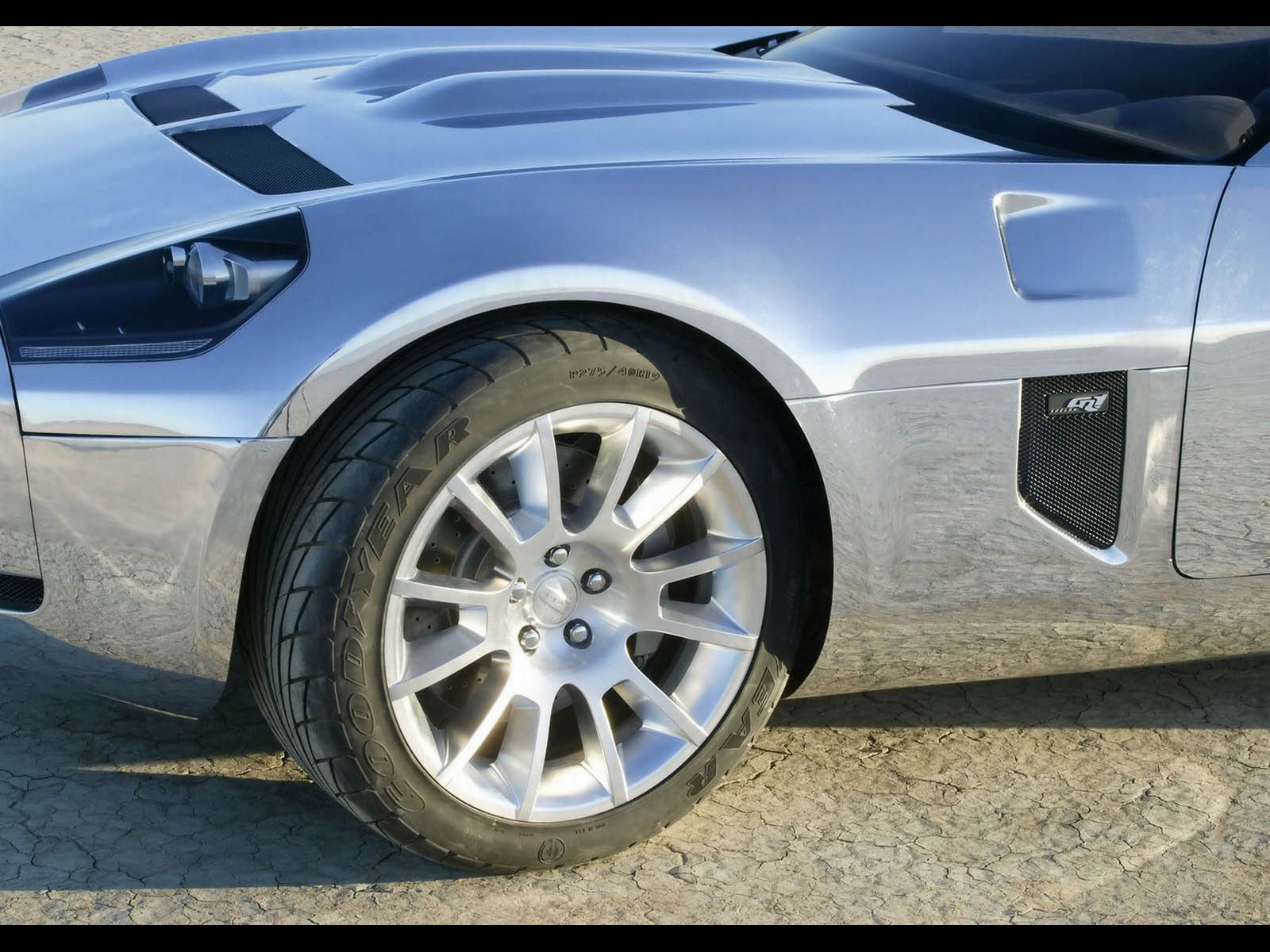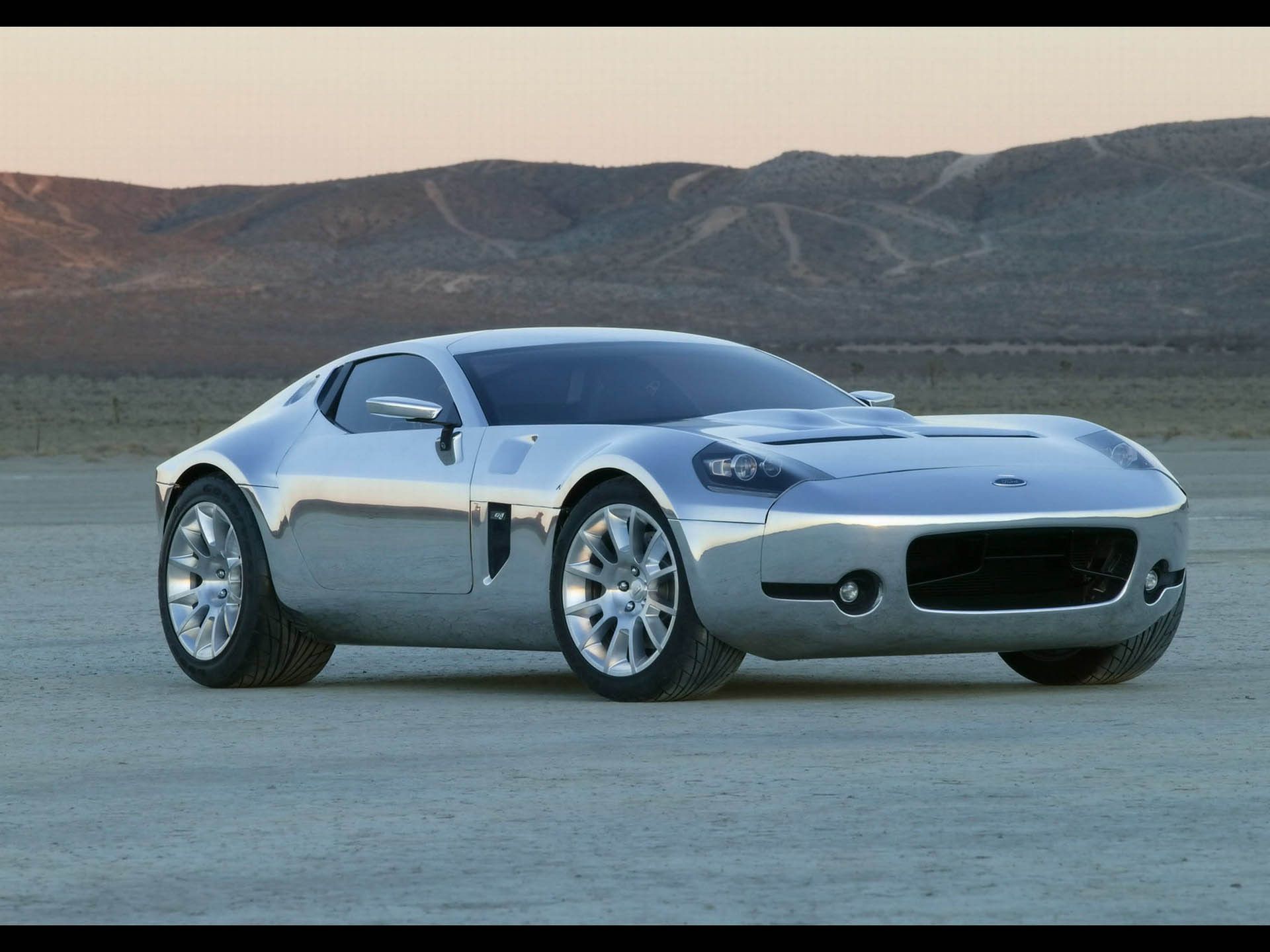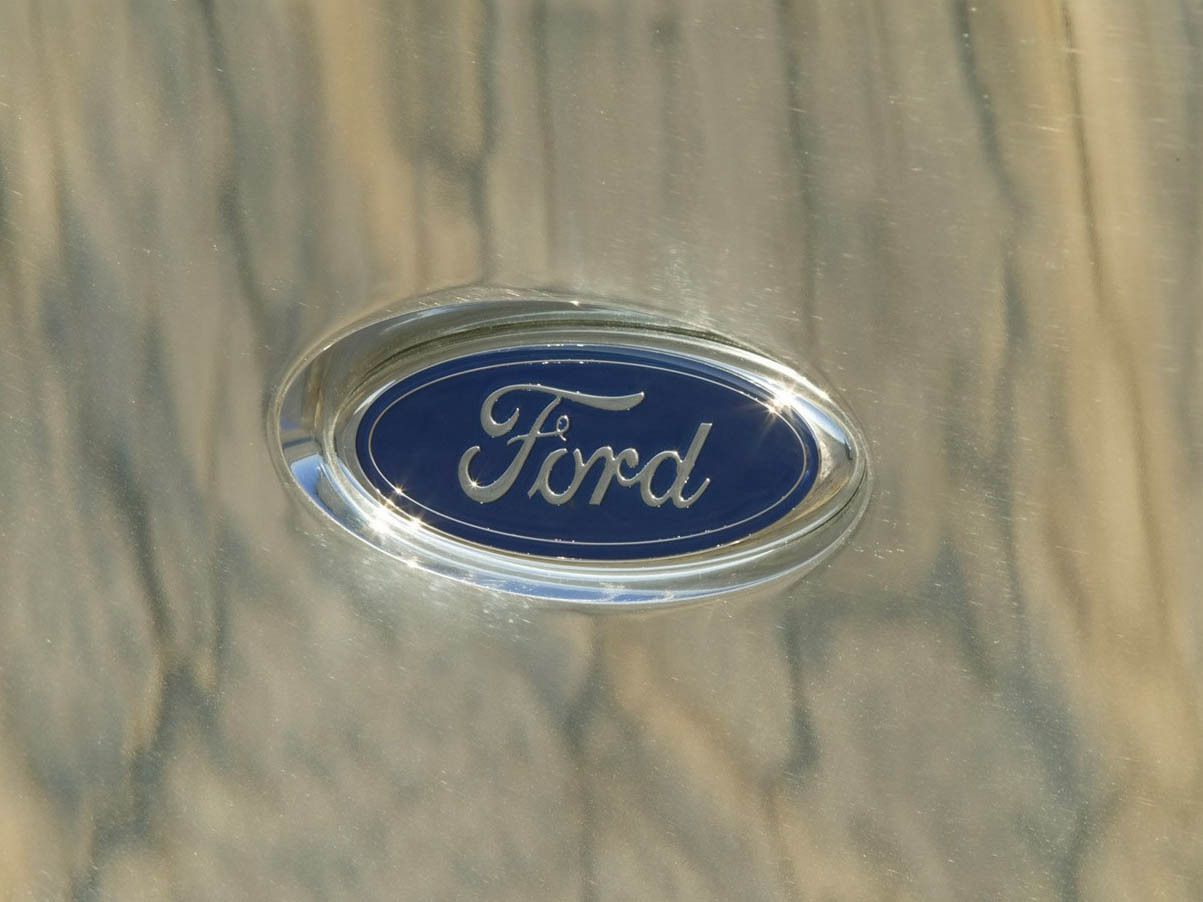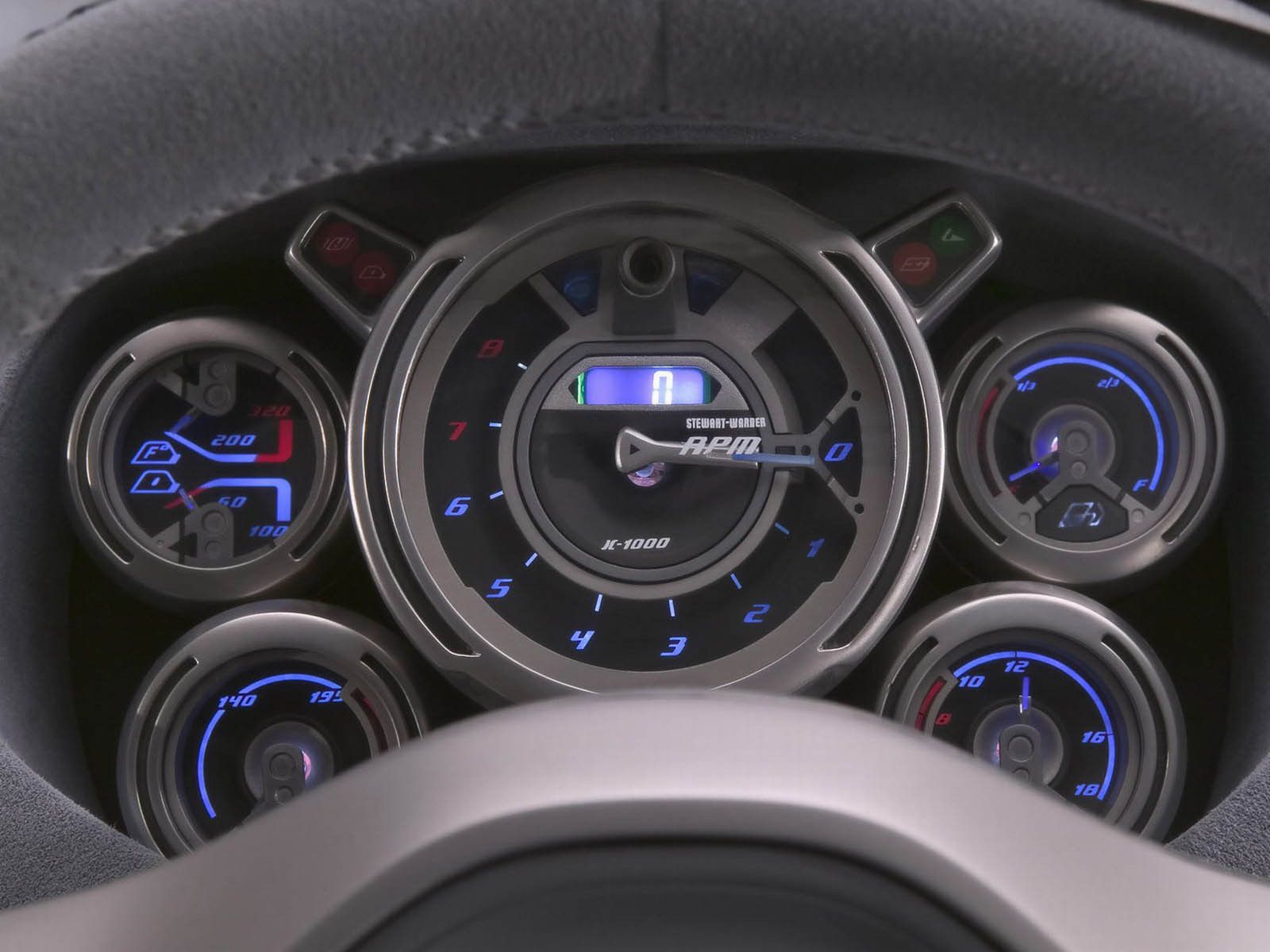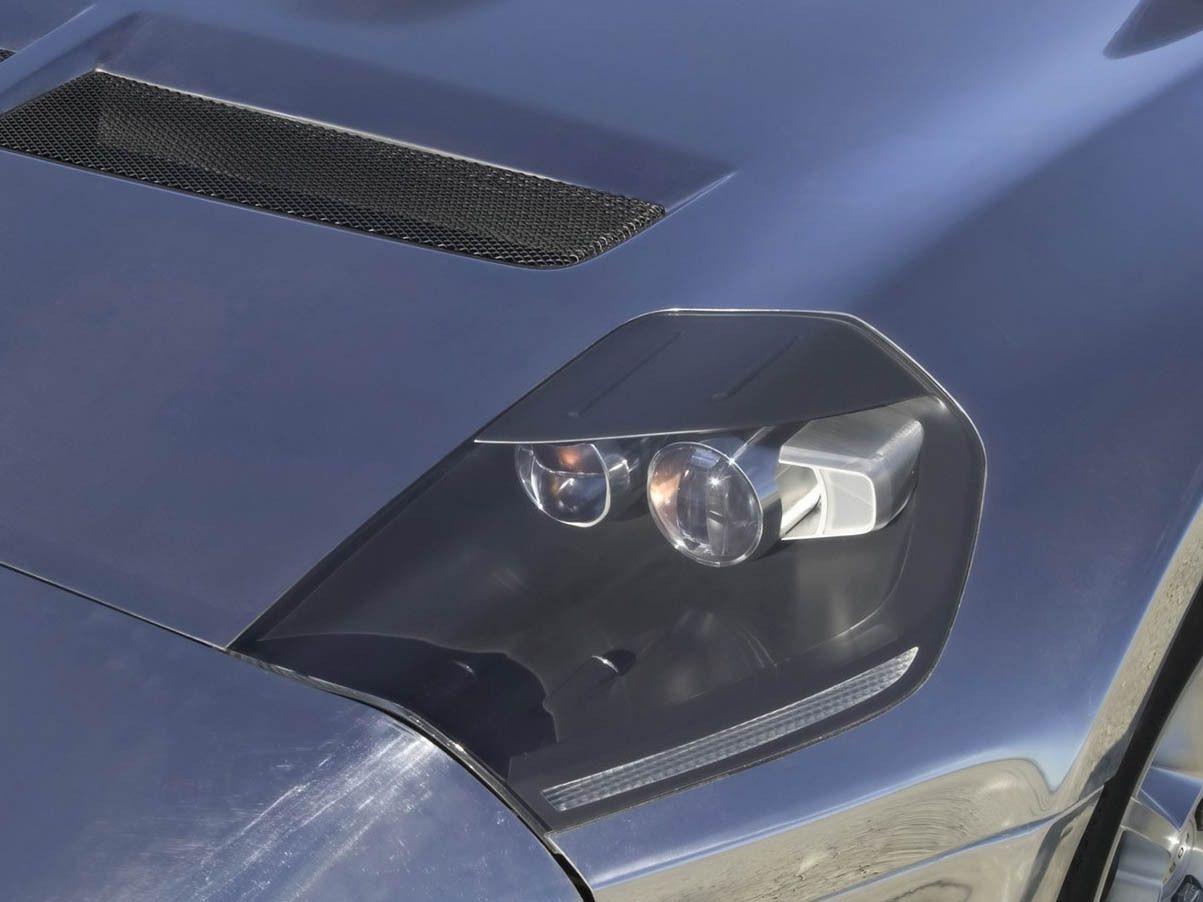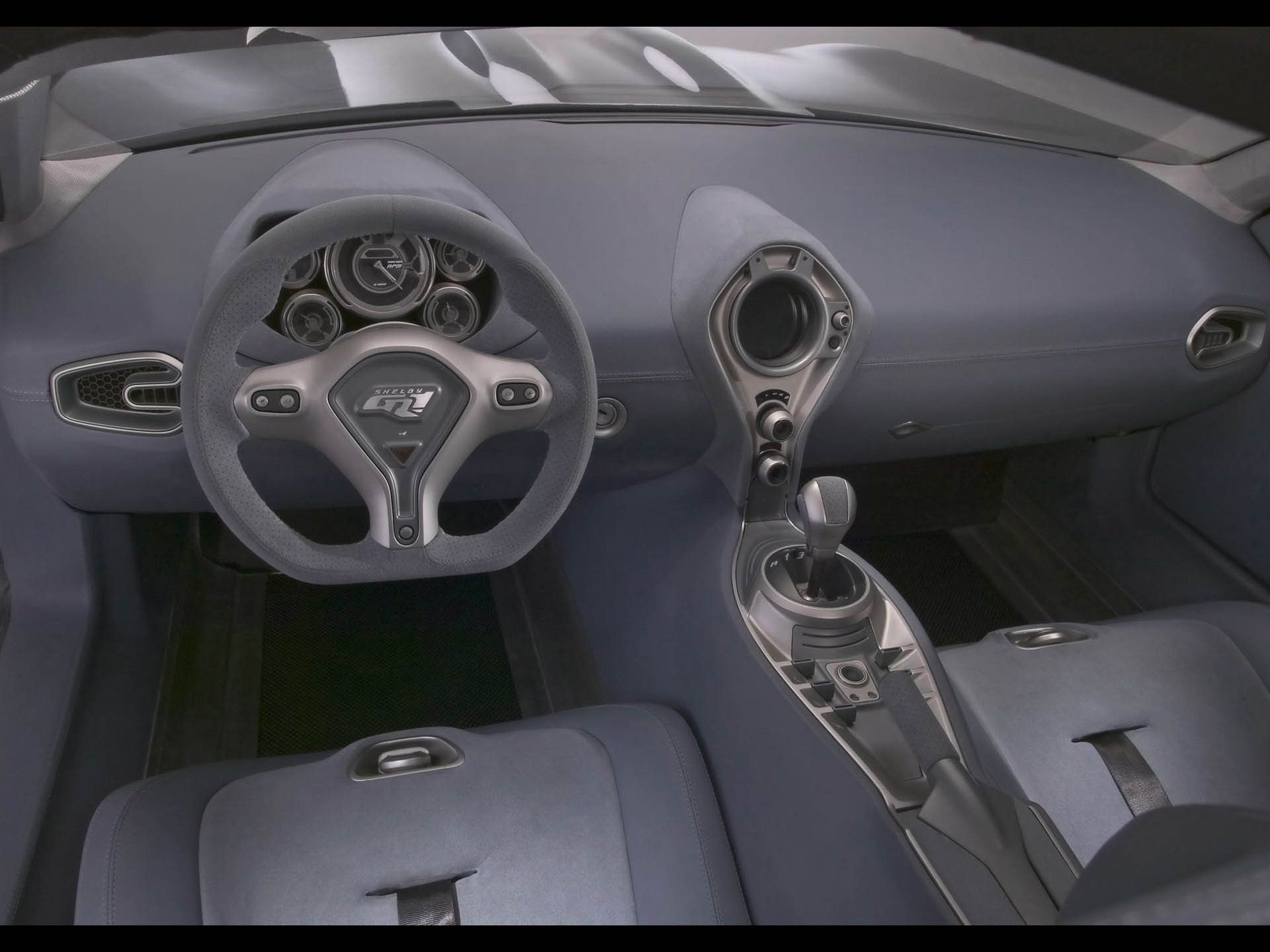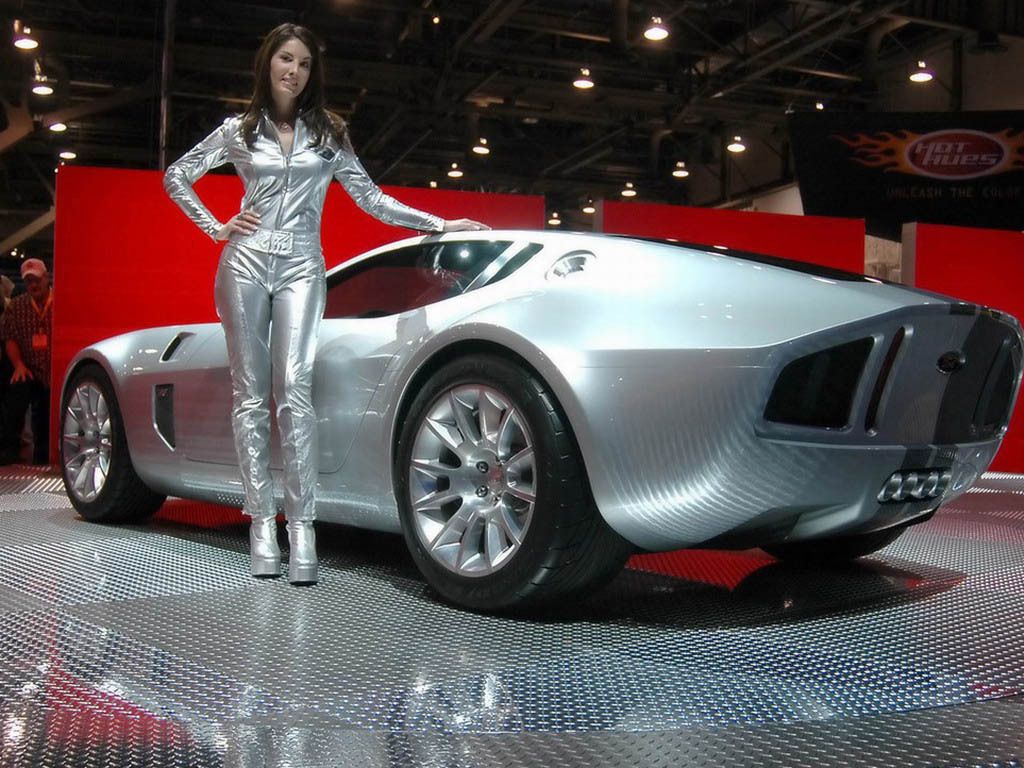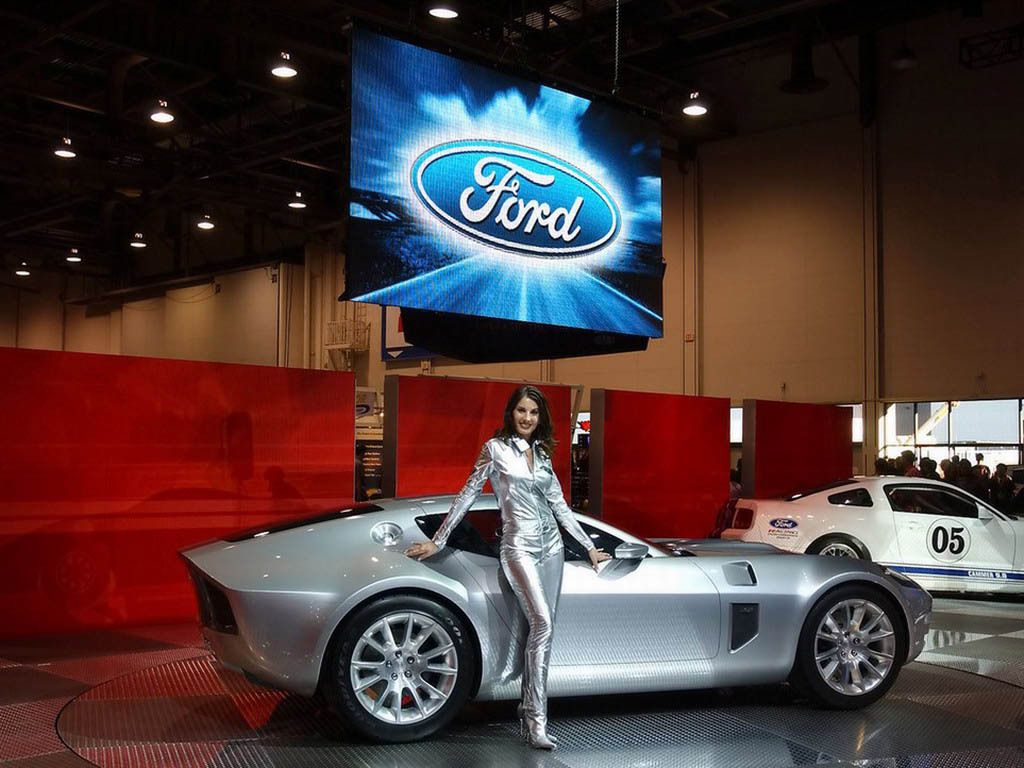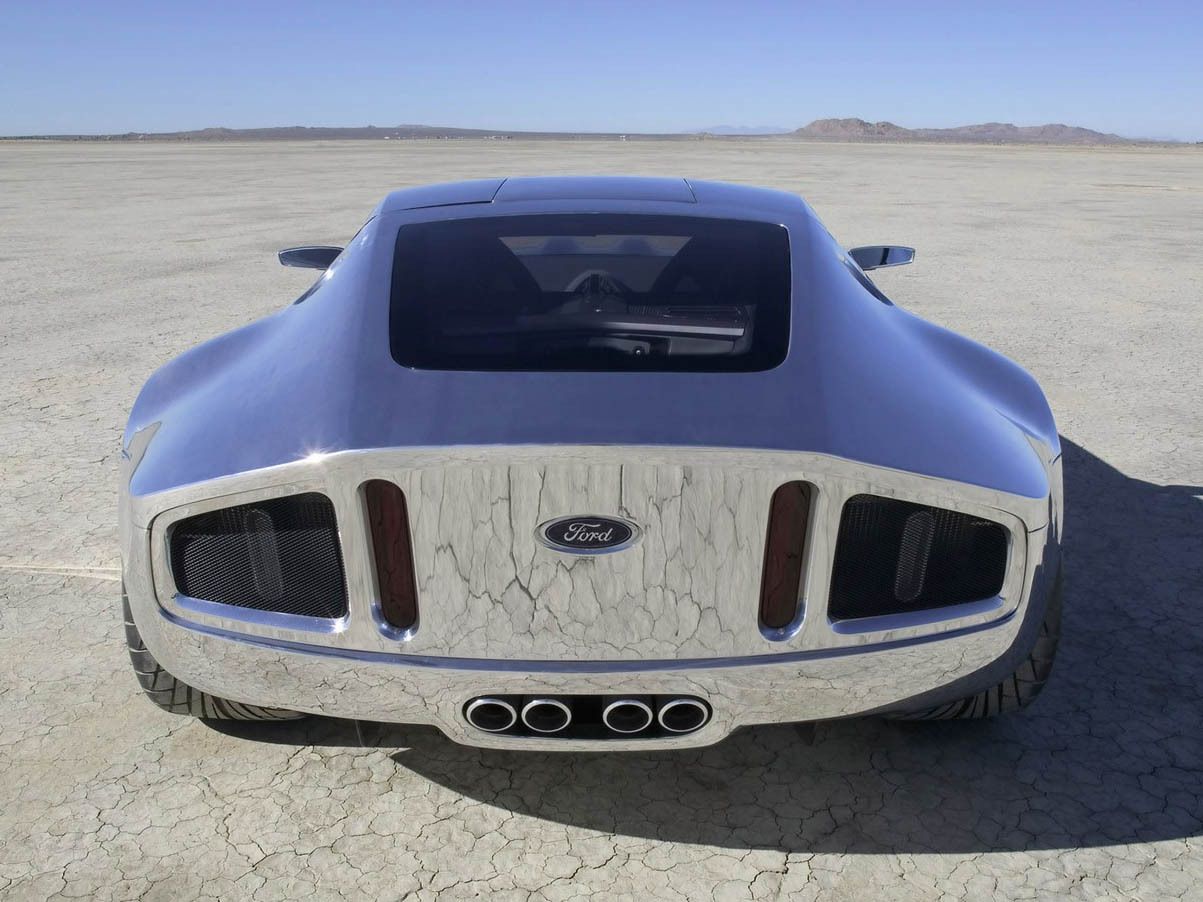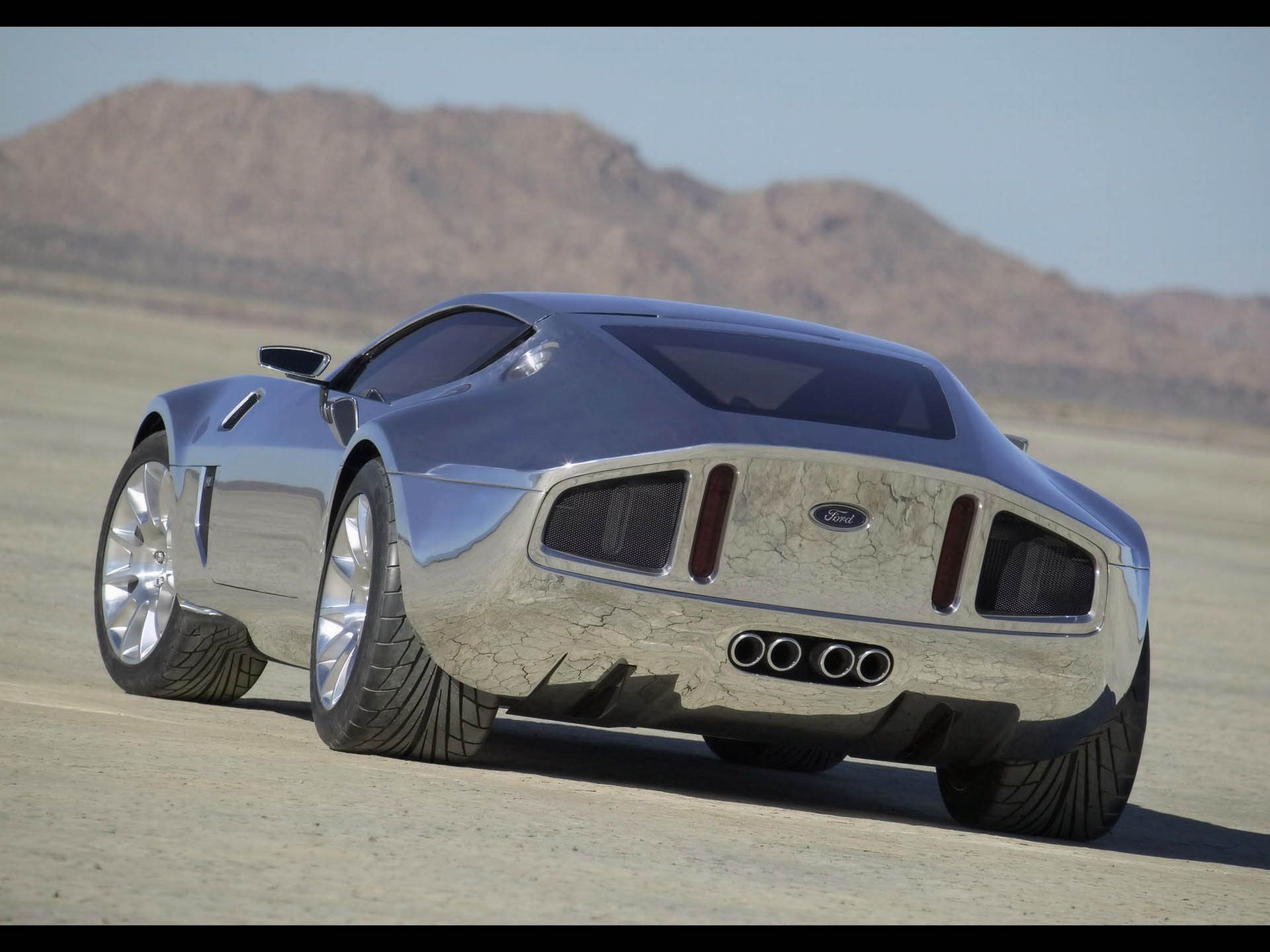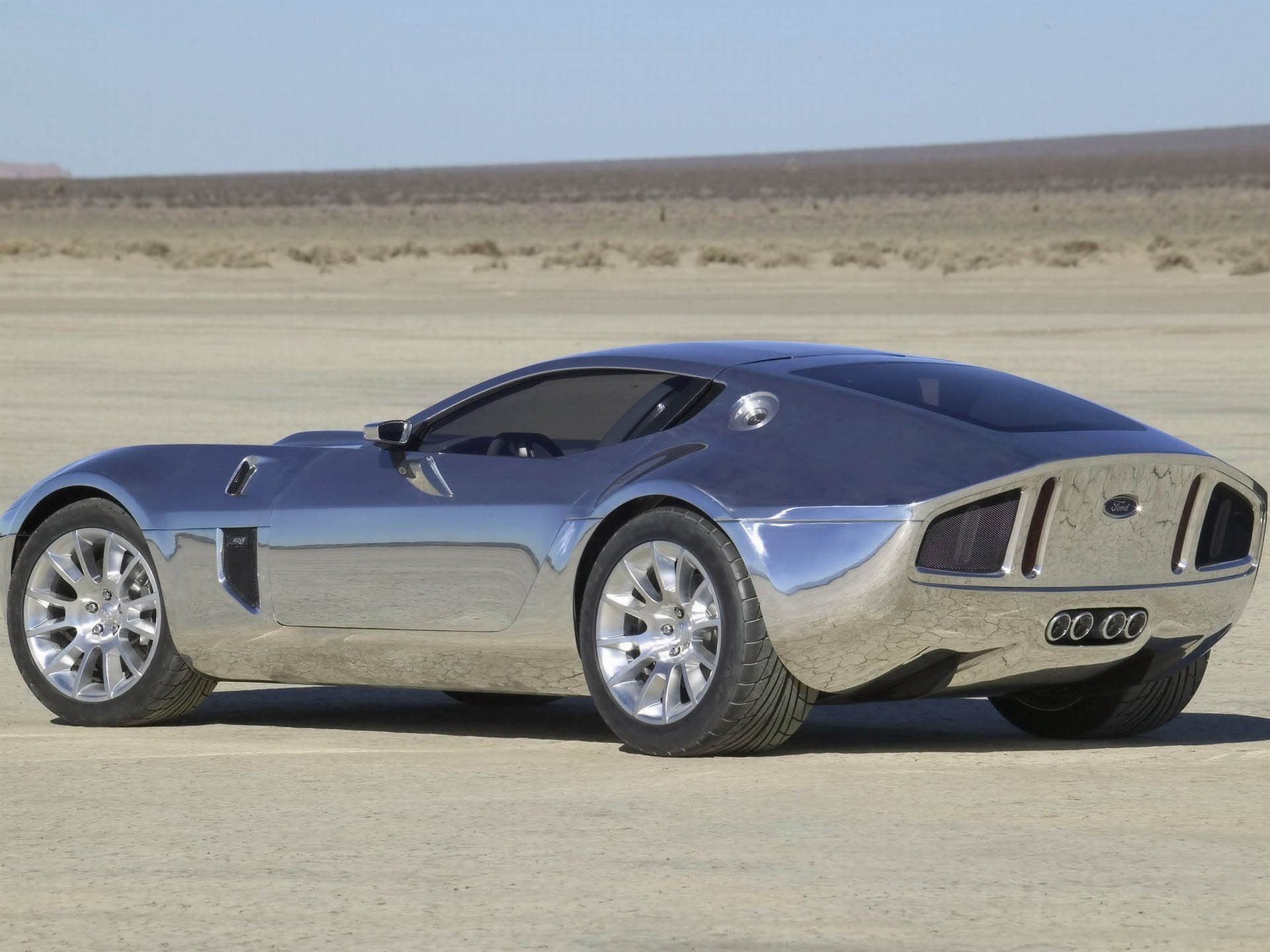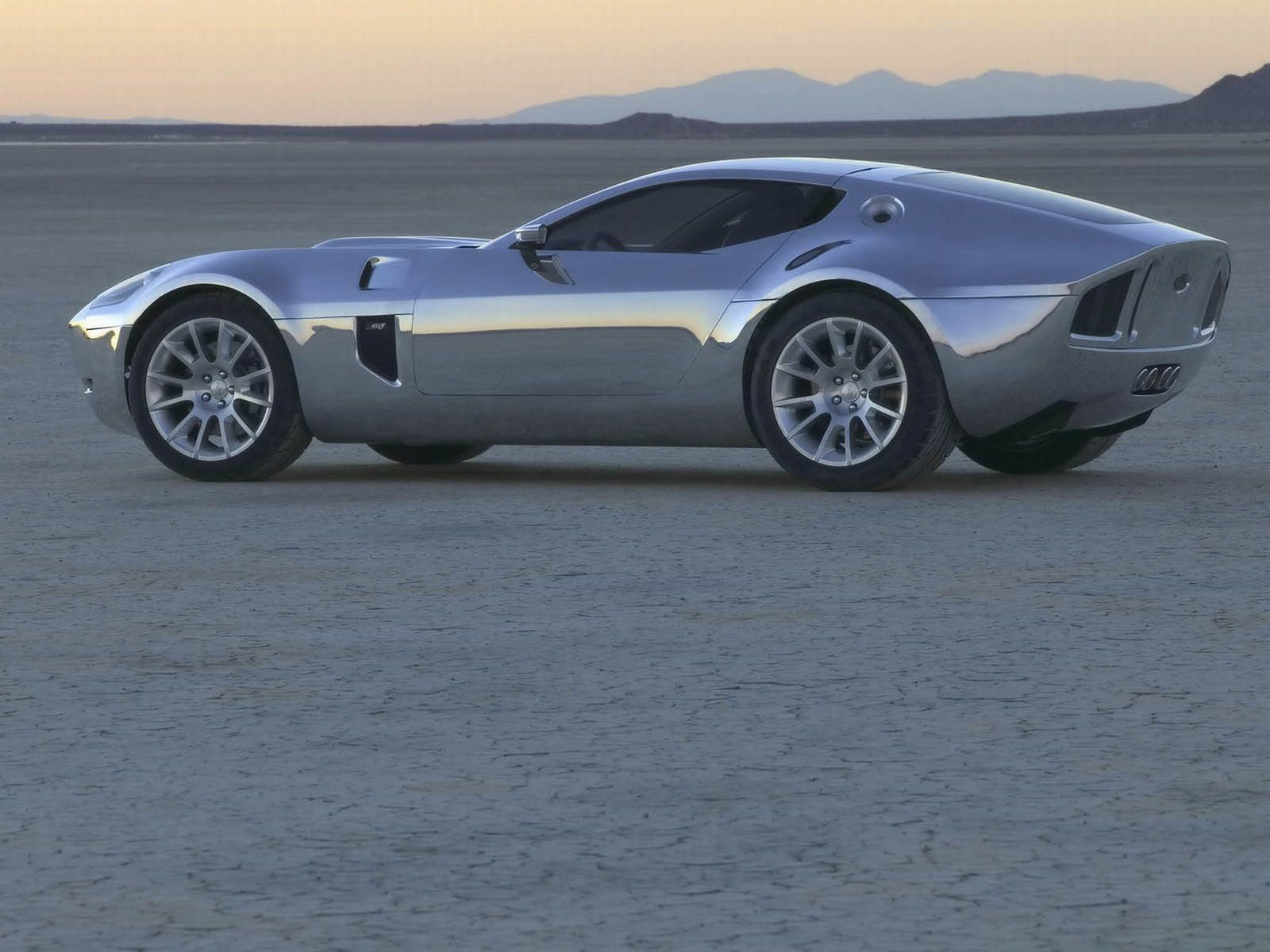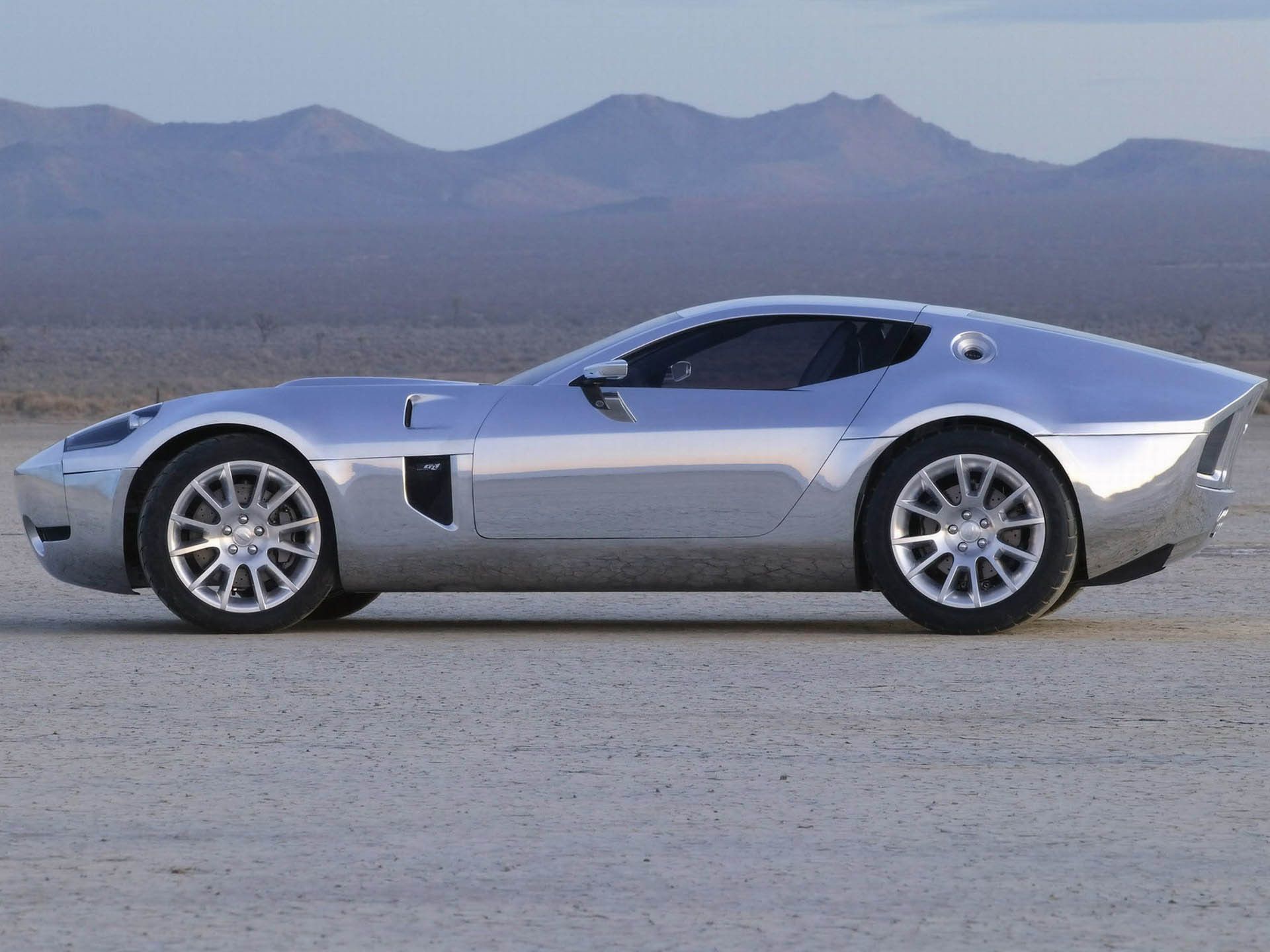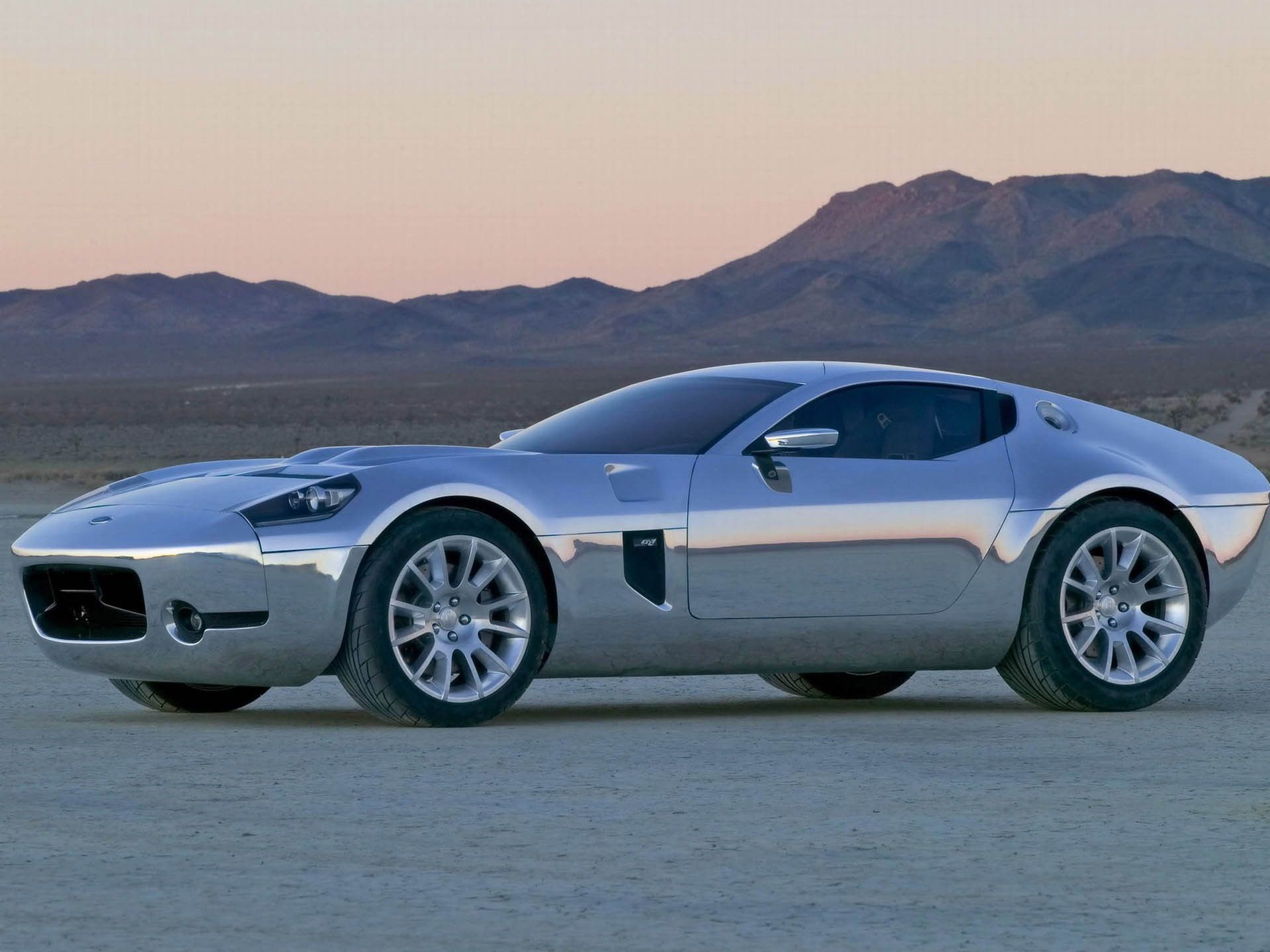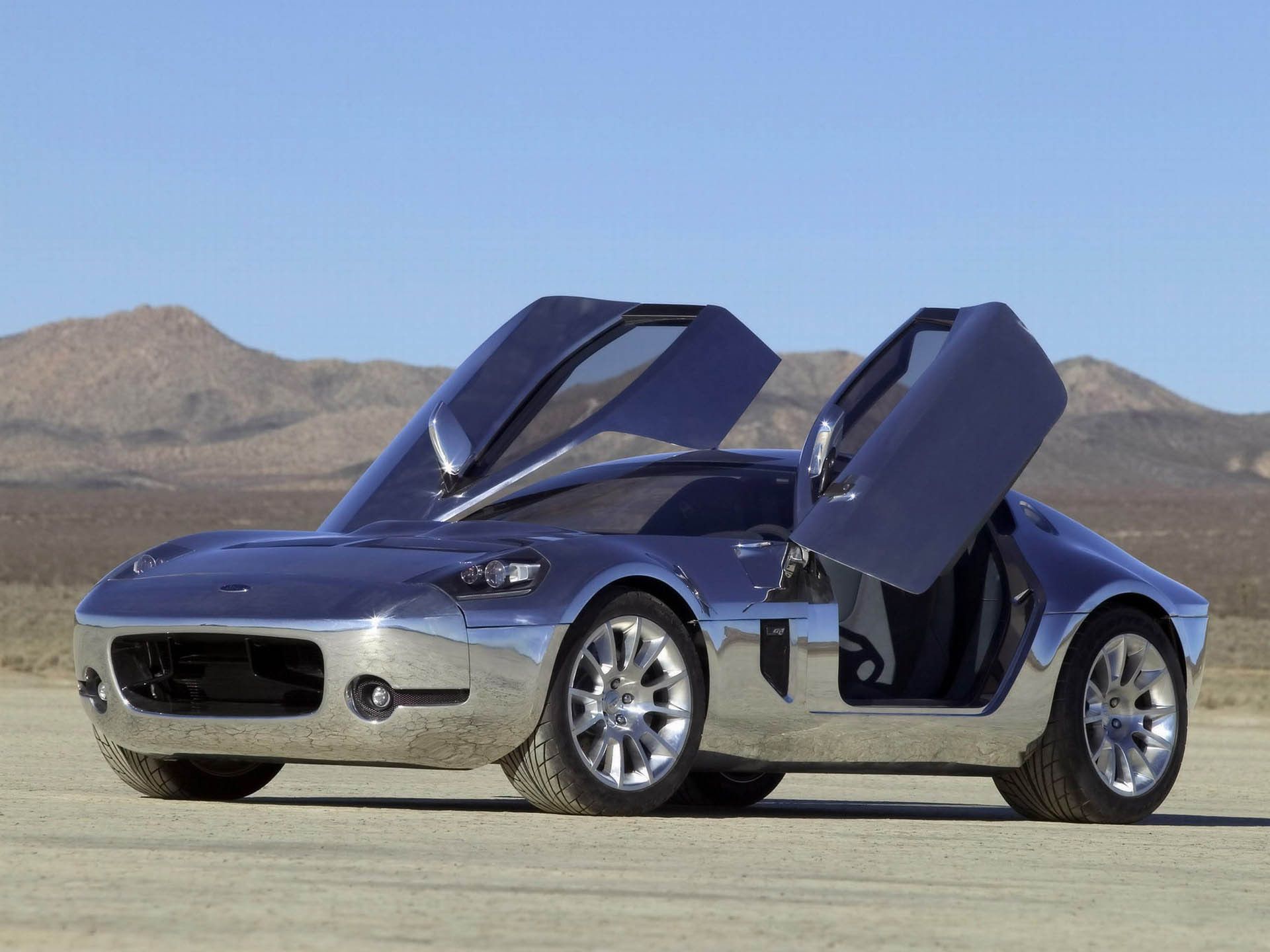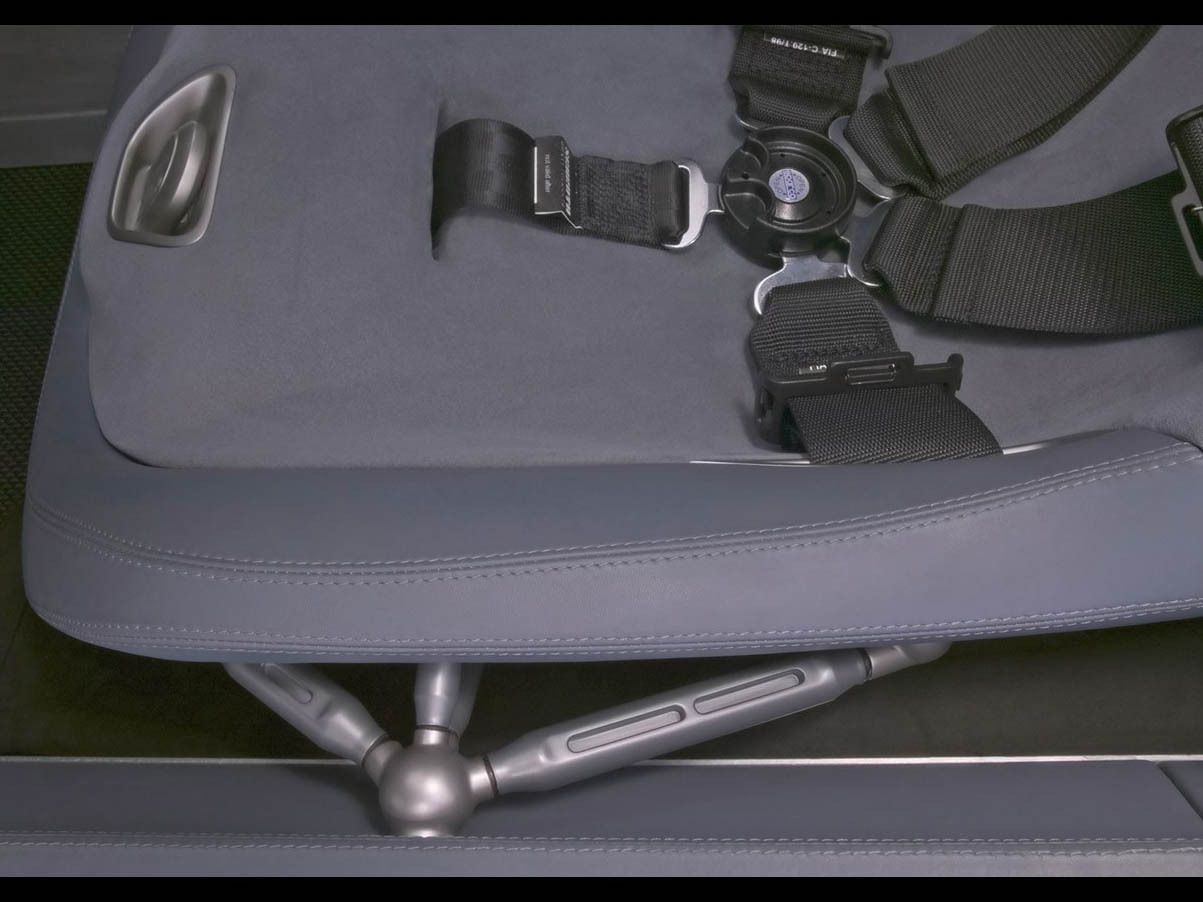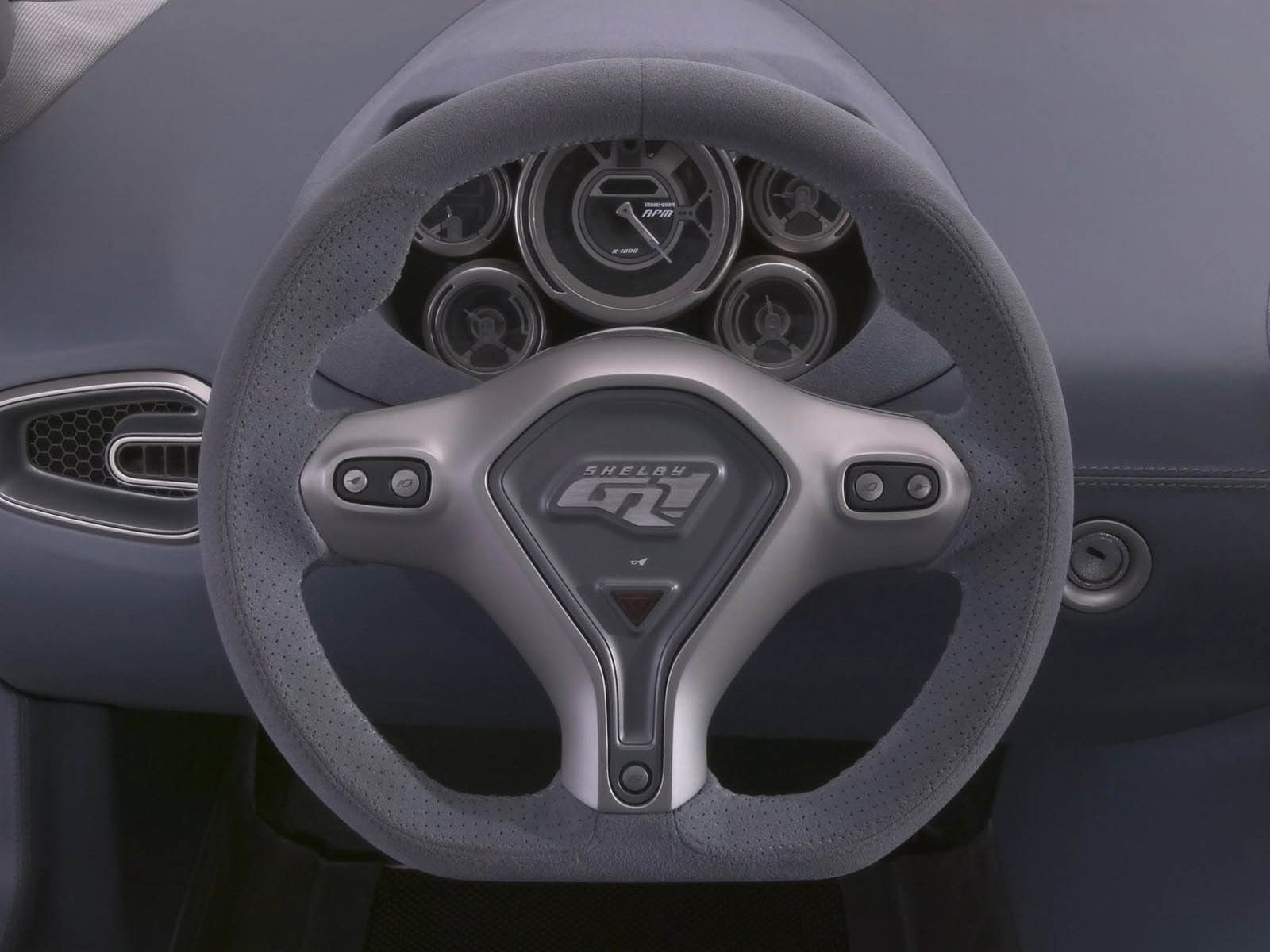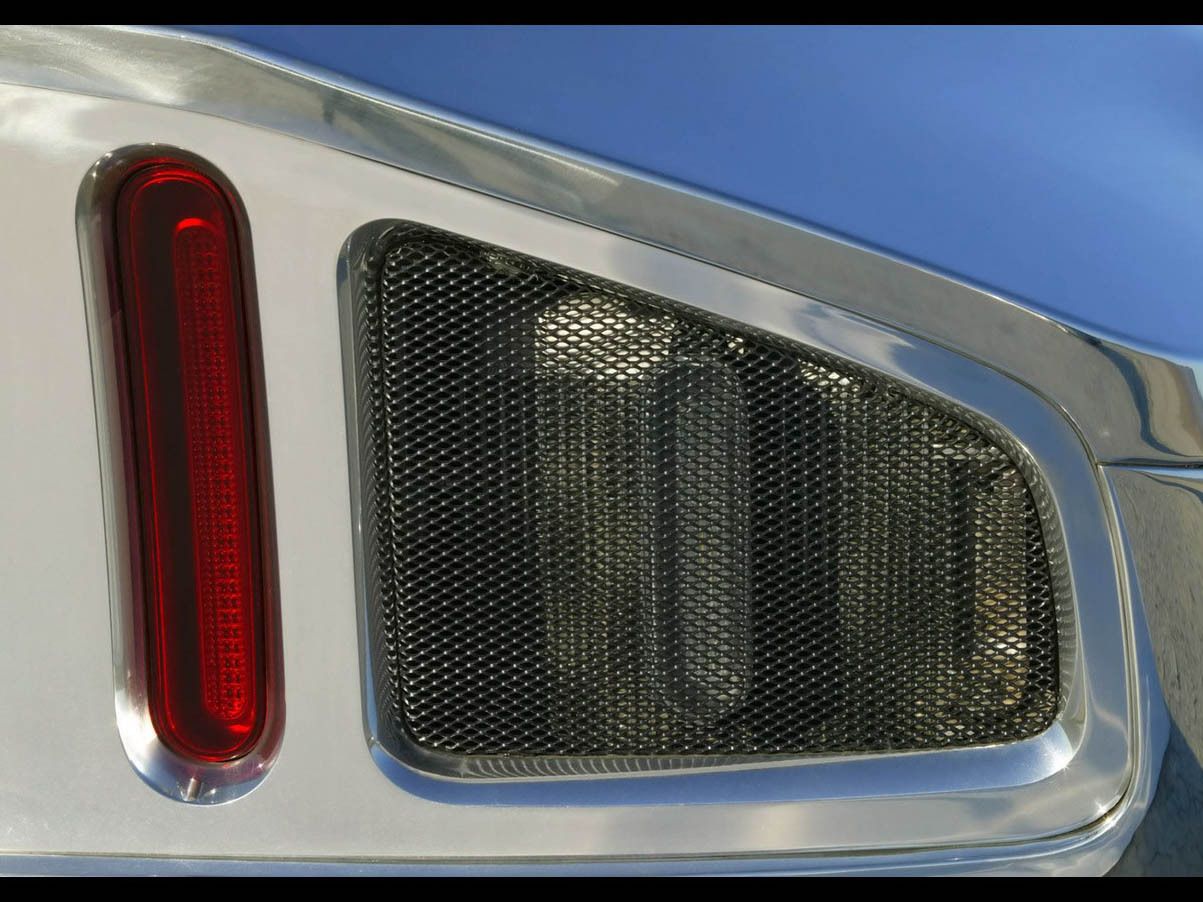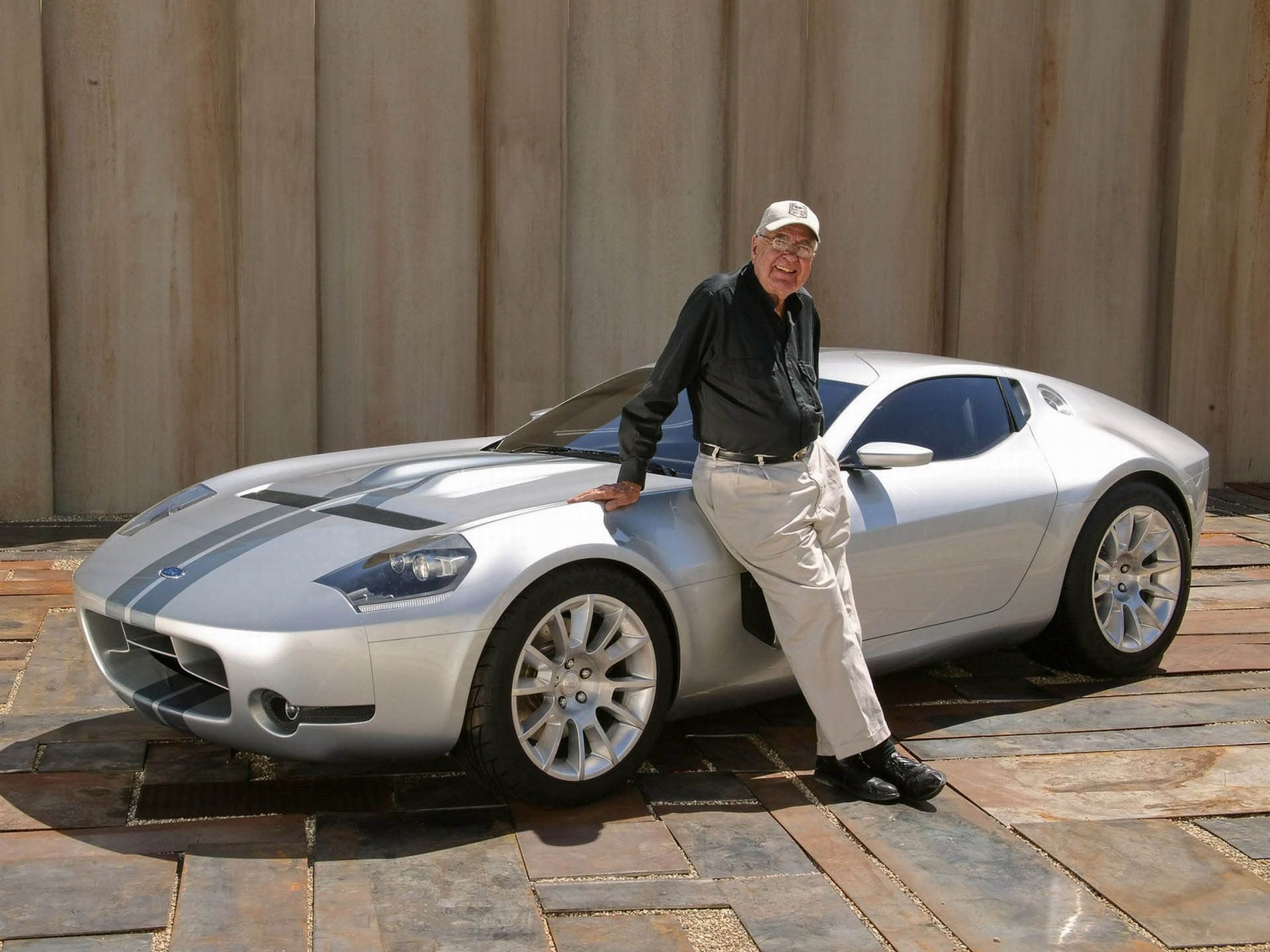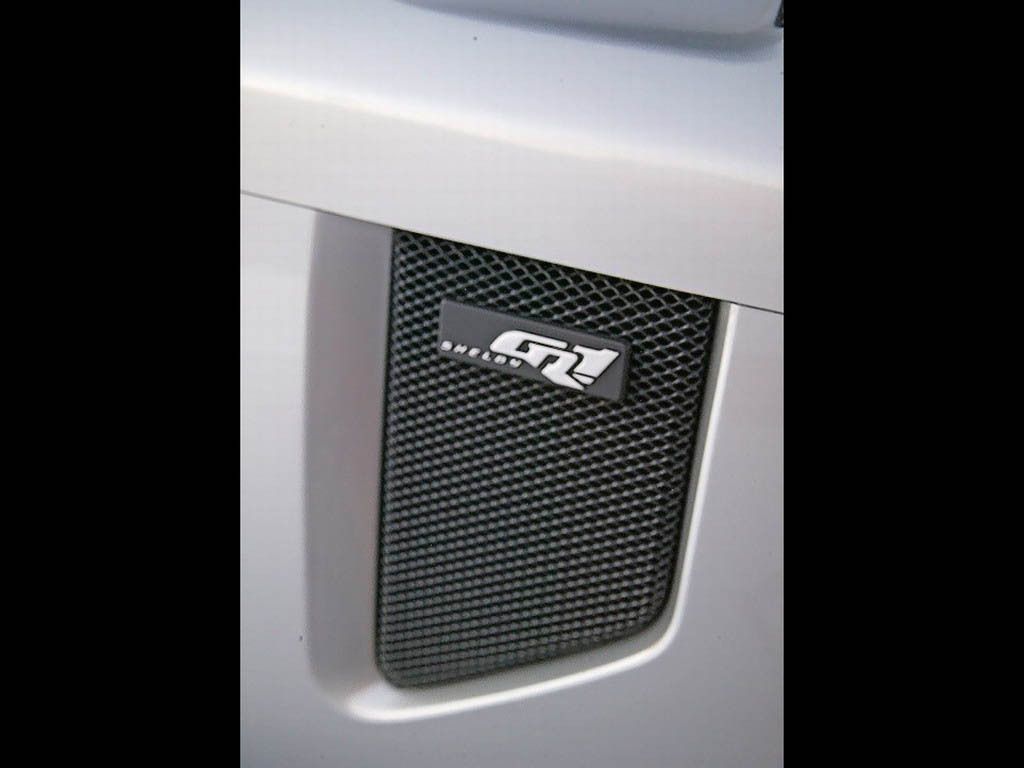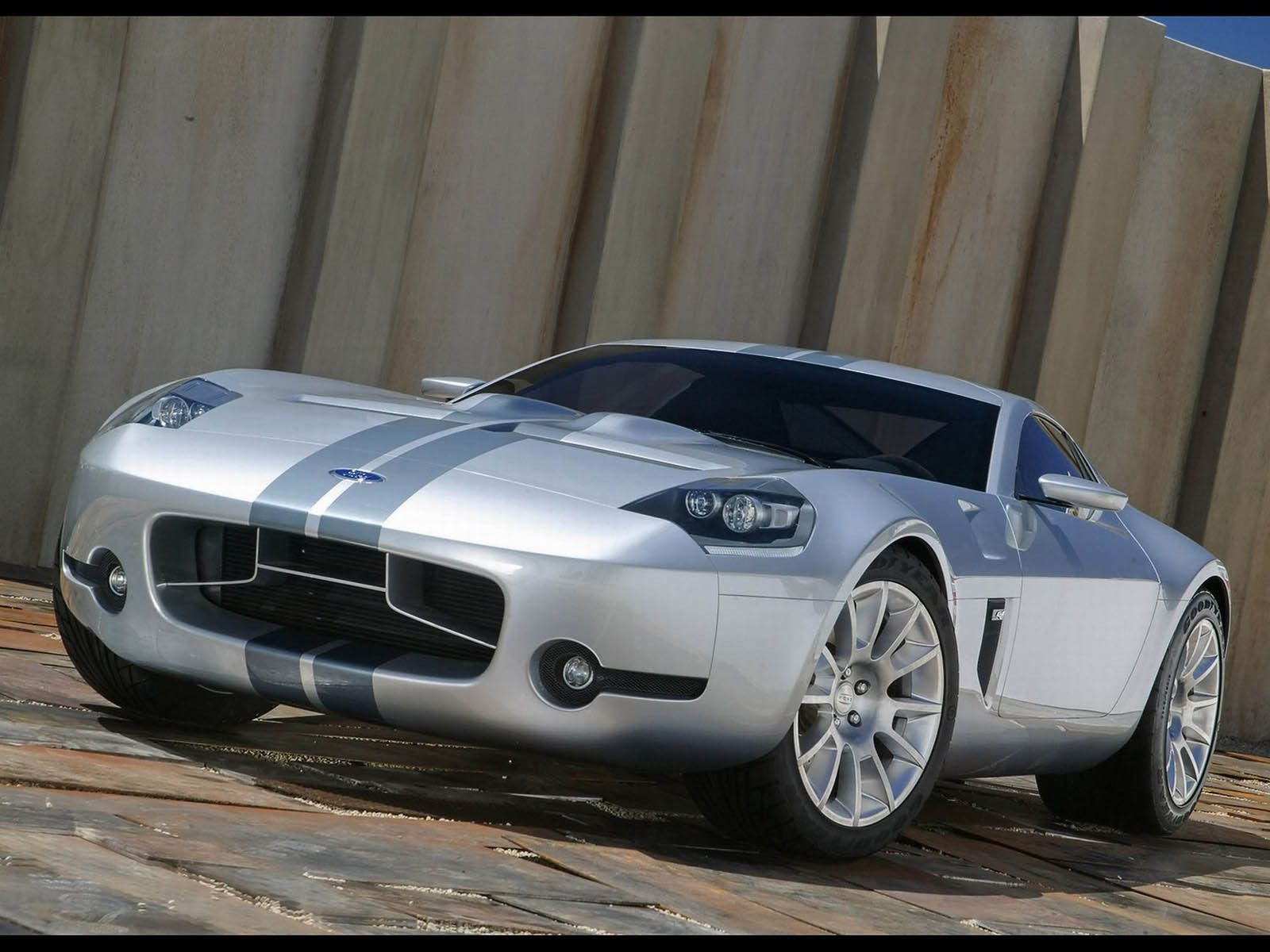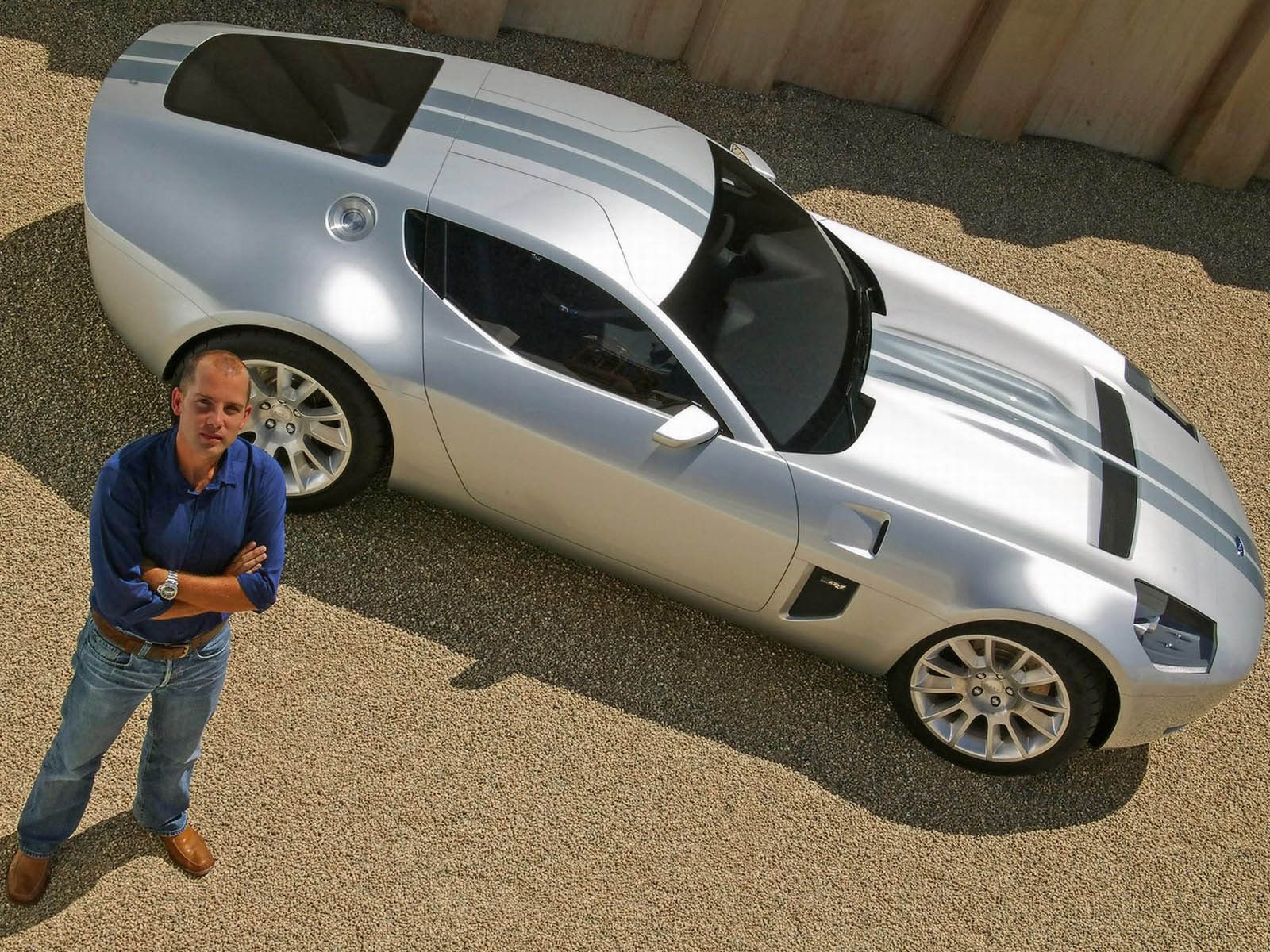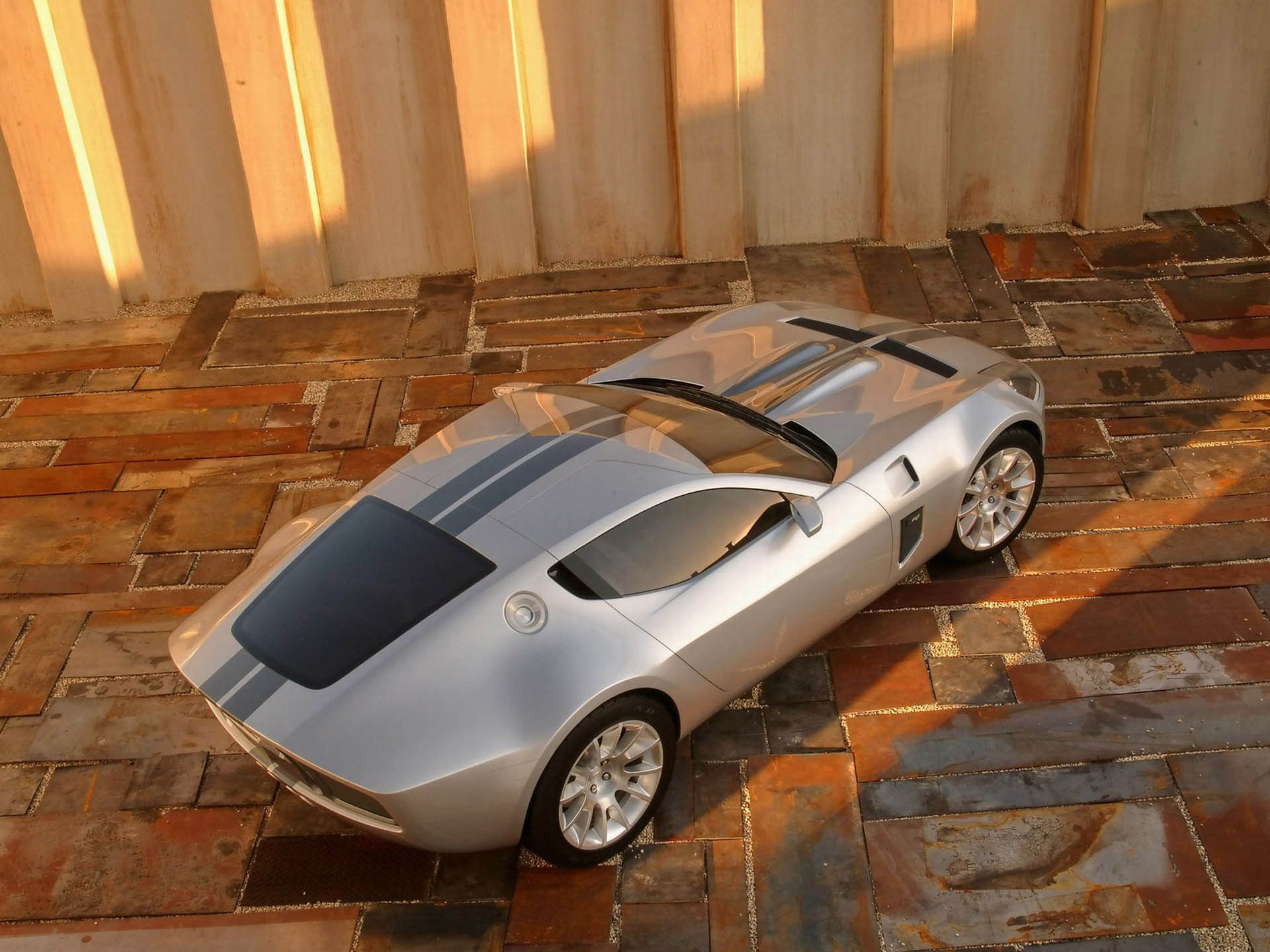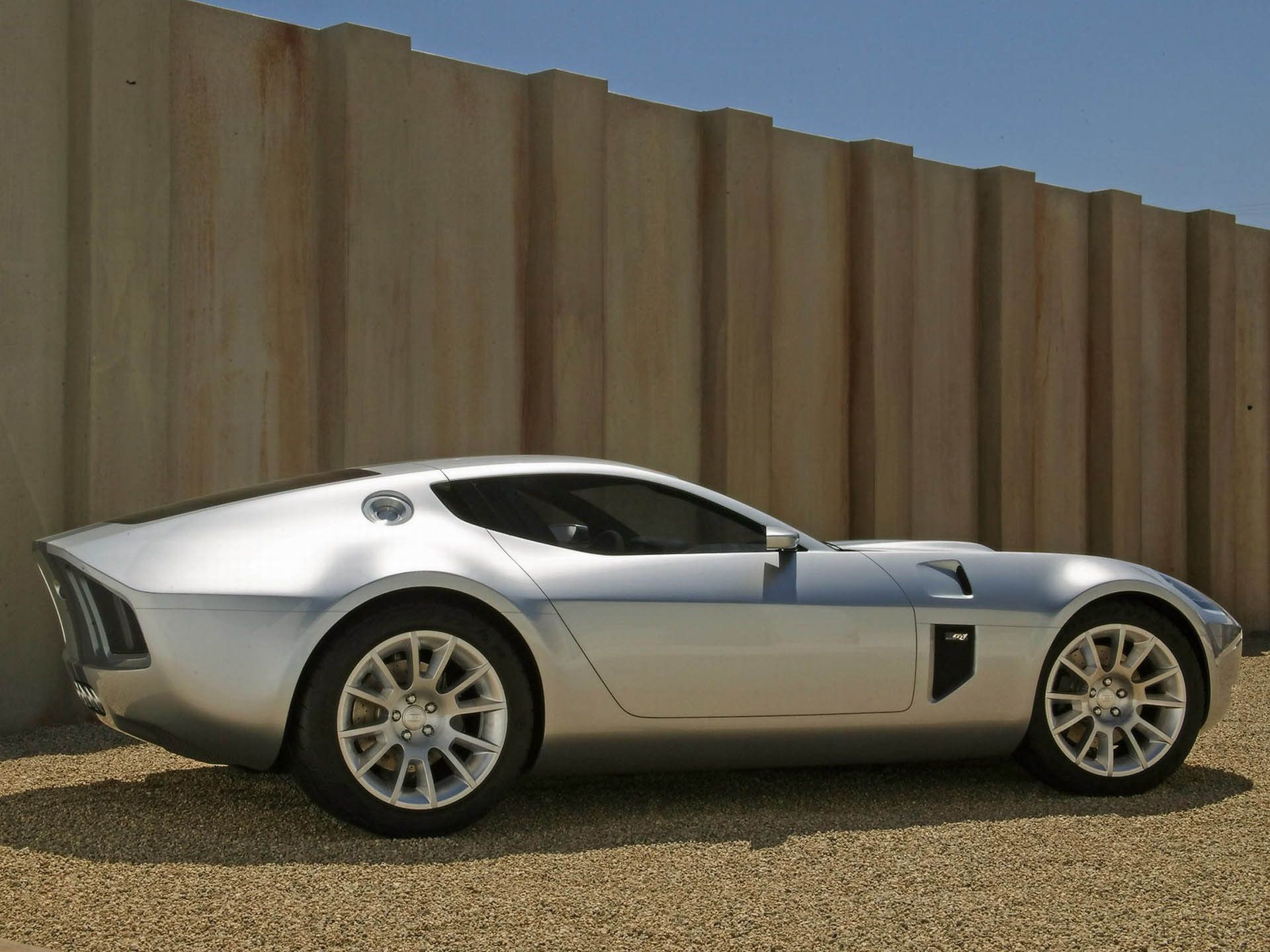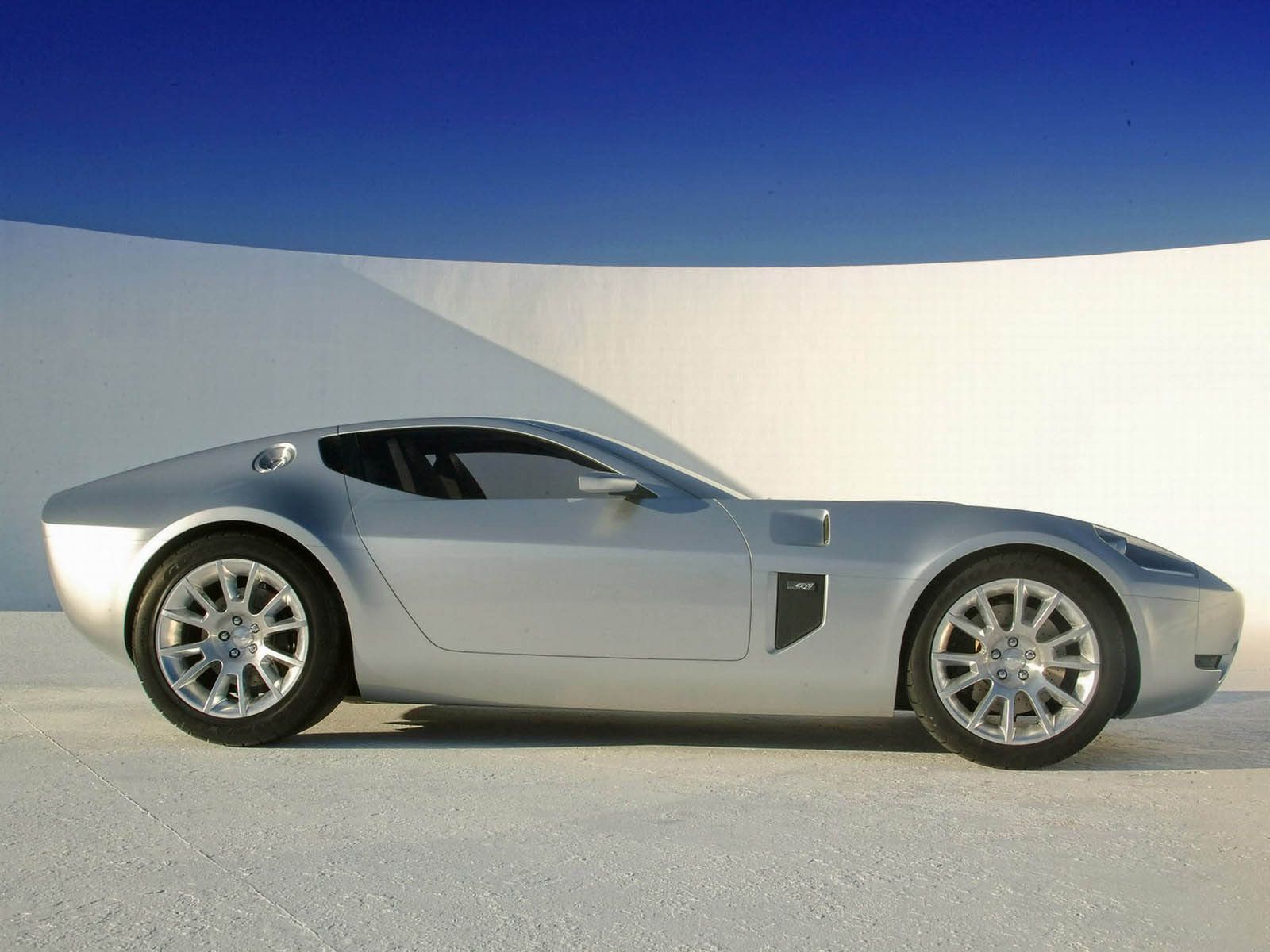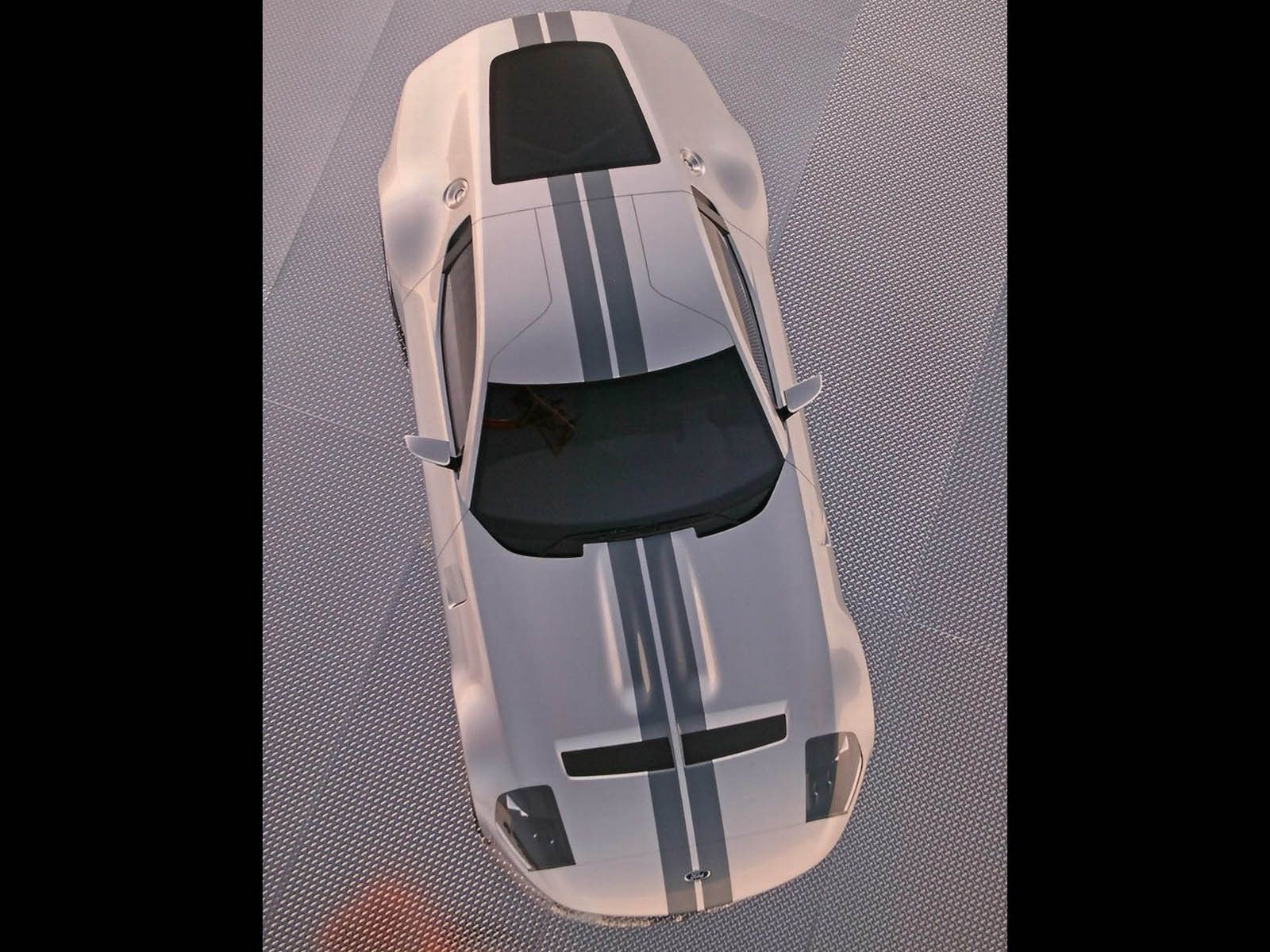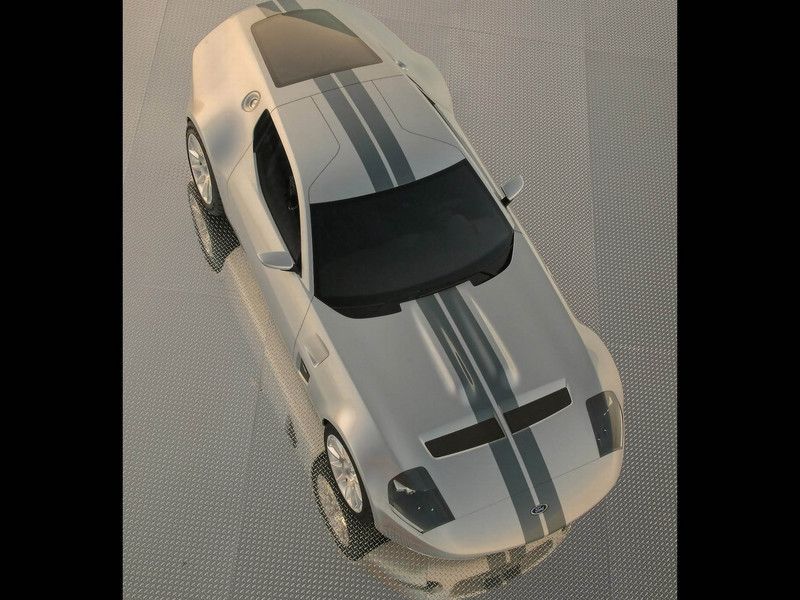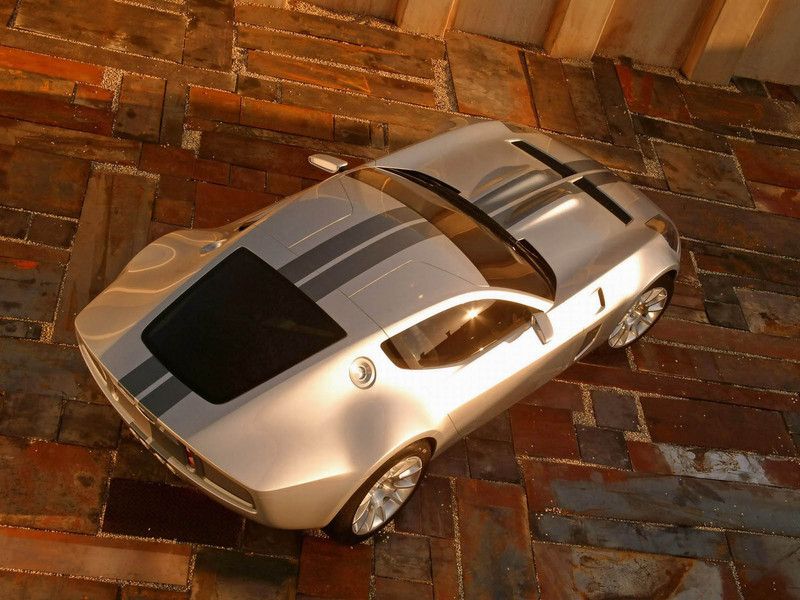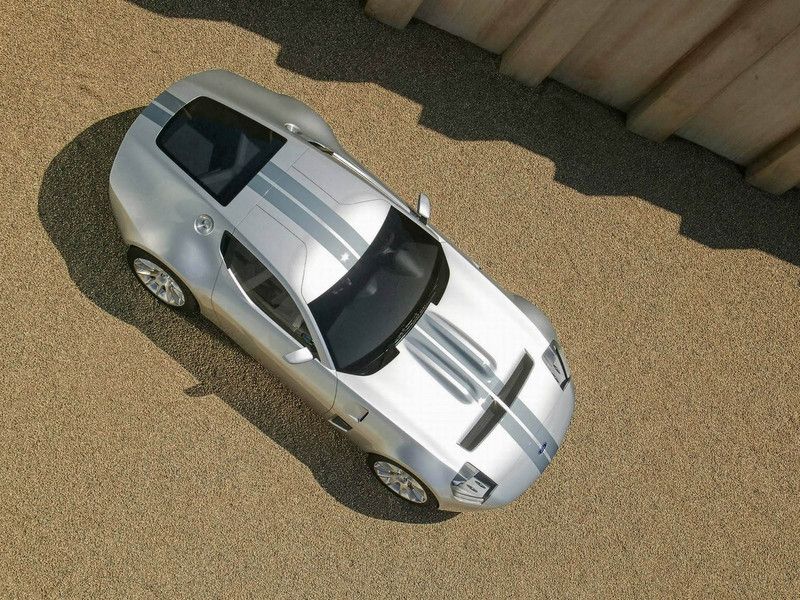Ford rebooted two of the cars that brought about some of its biggest victories ever scored on the world's road courses. First, in 2004, Ford introduced the Shelby Cobra Concept, a modern reinterpretation of the mythical AC Cobra and, one year later, the Cobra Daytona Coupe was reborn through the GR-1 prototype.
It was 14 years ago that Ford released the S197 fifth-generation Mustang. Its old-school styling proved to be a hit among customers young and old, but the Mustang was only the tip of the iceberg, the model that made it through all the board meetings. Ford, in fact, built a number of old school-looking concepts in the early '00s besides the Mustang and the GT that eventually got the green light. There was the 2001 Forty-Nine which harkened back to the smooth lines of the late '40s Ford Custom, the F150 Lightning Rod and, then, there was the GR-1. Clearly, nostalgia was trendy a decade and a half ago.
This car, like the open-top Shelby Cobra Concept, is underpinned by a modified Ford GT platform made to suit the front engine layout. It went from a sketch on a drawing board to a full-size clay model displayed at the 2004 Pebble Beach Concours d'Elegance in virtually no time and was then built as a fully-functional prototype in time for the 2005 North-American International Auto Show. Then, it all went silent. The suits didn't approve another high-performance supercar right after the GT and only recently have we heard of plans to revive this special one-off.
2005 Ford Shelby GR-1
- Make: Array
- Model: 2005 Ford Shelby GR-1
- [do not use] Vehicle Model: Array
2005 Ford Shelby GR-1 Exterior
The Ford GR-1 is the 40th-anniversary tribute to one of the greatest American race cars of all time, the Pete Brock-designed Shelby Cobra Daytona Coupe. Like the original, the GR-1 (which stands for Group Racing 1) made it from sketch to full-size model in a short amount of time, not as short as the 90-day build-up of the Daytona Coupe prototype, though, as times had moved on and technology was on a whole another level in the noughties.
Using CAD and machine cutting, the clay model was completed in just a week out of over 1,100 pounds worth of clay blocks. Then, the finishing touches were added over the course of three more weeks that saw the artisans at the Irvine Design Center peel away any piece of excess clay and add the details that transformed a silhouette into the GR-1 as we know it.
The running and driving car was completed over the winter of 2004 and was unveiled at the 2005 Detroit Auto Show, precisely one year after the Shelby Cobra Concept had been presented to the world. All the pieces fell in the right places as Shelby and Ford were celebrating 40 years since the GT World Championship title won by the original Cobra Daytona Coupe driven by Bob Bondurant to seven victories in ten races in 1965.
Next to the intake that opens up so you can take a peek at the massive radiator behind, there are the fog lights placed in a recessed position within two circular holes in the body that continue towards the outer extremities of the front fascia through a narrow opening.
The lines of the car are strong, defined by a number of character creases along the body. There's the one that draws itself along the side of the car, continuing the edge of the rear end all the way to the nose, and the two lines that go down from the A-pillars on the brow of the front fenders.
Talking about the car's profile, it is very clean with only the aforementioned character line breaking what would otherwise be a smooth curved surface. The line, obviously, is there to underline the bulging wheel arches that hide enormous 345/35R Goodyear tires at the rear and 275/40R's up front. Below the side vents on the hood, there are two more seemingly fake ones with the special GR-1 logo on them.
The doors open upwards in butterfly style, the door handle finding its place next to the window frame so as not to ruin the flush appearance of the doors. The mirrors are narrow and placed in the lower left corner. The gas cap is just above the protruding rear wheel arches.
There are two trapezoidal air vents positioned on the extremities of the rear fascia with narrow taillights next to them. The back end is where the GR-1 strays furthest away from the design of the Shelby Cobra Daytona Coupe that had only some tiny round taillights at the rear and no vents. Below the center panel, there are four exhaust outlets as well as a pretty basic diffuser carved into the bottom edge of the bumper.
The car doesn't have any moving aerodynamic elements although the original Cobra was considered unstable without the added ducktail that Brock wanted to include from the get-go, only to be ignored after the initial tests at Riverside showed very good lap times and some astonishing speeds down the back straight. Still, the wing was added for the 1965 season, and it meant that the front and the back were more balanced and you weren't getting the kind of nose lift you did on the early GT40s that were particularly flawed.
2005 Ford Shelby GR-1 Dimensions
|
Length: |
173.7 inches |
|
Width: |
74.6 inches |
|
Height: |
46.0 inches |
|
Wheelbase: |
100 inches |
2005 Ford Shelby GR-1 Interior
The interior of the Shelby GR-1 Concept is futuristic despite a number of throwback touches like the analog dials behind the steering wheel. The cabin may feel a bit claustrophobic to some due to the slanted roofline that goes down before abruptly ending with the Kamm tail, but getting in and out of the GR-1 isn't particularly hard with the doors opening upwards and taking with them a small portion of the roof as well.
Once seated in the carbon fiber bucket seats and hugged by the harnesses, you can grab the semi-circular steering wheel which has the GR-1 logo right in the middle, above the triangular horn button.
As mentioned, the dials are all analog although the speed is displayed on a small digital screen in the middle of the tachometer. The numbers in every dial only light up when you turn the key in the ignition - a true throwback! - and let it roar into life. The door panels are also interesting with their carved appearance. The interior door handle is like a latch that you pull on and even has a pointer on it in case you miss the obvious piece that sticks out from an otherwise caved in door panel.
Then there's the center console with its minimalistic look.
There's also a radio that can play MP3s in the GR-1 and, as HowStuffWorks says, it can "can record and playback, ostensibly so drivers can record notes about the track while they take practice laps." Inside this car, you'll enjoy a quiet ride not because the naturally-aspirated V-10 is barely making any noise, but because the speakers emit continuously while you're driving noise-dampening frequencies, a pretty high-tech solution for 2005.
2005 Ford Shelby GR-1 Drivetrain
The GR-1 was completed in such a short amount of time because Ford already had most of the components. Basically, it sits on the same chassis as the Shelby Cobra Concept and was allowed to scavenge through the same Ford GT parts bin as the Cobra Concept that preceded it.
That engine, an aluminum block 6.4-liter unit with dry sump lubrication, develops 605 horsepower at 6,750 rpm and 501 pound-feet of torque at 5,500 rpm. By comparison, the Ford GT in production trim produces 550 horsepower at 6,500 rpm despite the fact that its V-8 featured a supercharger. Indeed, the GR-1 was also supposed to go the way of a V-8 that would've lowered the center of gravity had it gone into production.
The gearbox that sends all that oomph to the rear wheels is a Ricardo 6-speed manual, the same transaxle as on the GT.
The suspension was by unequal A-Arms all around, with control arms, coil springs, monotube dampers, and anti-roll bars. Steering is of the typical rack and pinion type with Brembo brakes behind all four wheels.
2005 Ford Shelby GR-1 Specifications (Concept)
|
Engine |
6.40-liter, aluminum block, naturally-aspirated V-10 |
|
Lubrication |
Dry sump |
|
Output |
605 horsepower at 6,750 rpm |
|
Torque |
501 pound-feet of torque at 5,500 rpm |
|
Top speed (limited) |
180-190 mph |
|
0 to 60 mph |
3.9 seconds |
|
Transmission |
Ricardo six-speed manual transaxle |
|
Suspension |
Unequal A-Arms, control arms, coil springs, monotube dampers, anti-roll bars |
|
Brakes |
Brembo discs with four-piston monoblock calipers |
|
Weight |
3,700 pounds |
Brief history
"The greatest accomplishment of my life was winning the World Manufacturers’ Championship in 1965," is what Carroll Shelby used to say when talking about the first time he crushed Ferrari on his own terms, the only time he did it with a car bearing his own name. That car?
Brock, who was new at Shelby's shop, realized that the Shelby Cobra was never going to beat Ferrari at Le Mans, even with the mythical 289 (4.7-liter) V-8 and the aerodynamic hardtop in place. It simply wasn't fast enough. Having studied in the GM library the findings of German aerodynamicists from the '30s, he found out he could reduce drag by employing a straight-cut tail instead of the usual elongated, streamlined setup used on pre-War land speed record cars such as the Auto-Union Type C Streamliner. This tail was the creation of one Wunibald Kamm who came up with this sloping tail that abruptly ended with a vertical or slightly angled surface.
Shelby wanted to beat Ferrari at any cost, so he dully urged everyone to back Brock in further refining the Coupe. However, due to the lack of time needed to machine new parts, the car debuted at Daytona in 1964 without the ducktail. On the banking, the pressure pushed the car down anyway, so the lack of downforce at the back wasn't noticeable and the team soldiered on without it. Shelby won Le Mans that year with the Coupe that has, by now, been renamed 'Daytona Coupe' since it debuted at that venue. The team missed on the title after the second to last race, at Monza, was held but without any points up for grabs for the world championship standings. It's said that Enzo Ferrari himself pulled some strings to take the round off the world championship calendar so that Shelby wouldn't beat Ferrari at Monza.
In 1965, Shelby was going to go all in: there would be the Shelby American operation which would manage the cars that raced Stateside and then, back in Europe, the cars would be run for Shelby by longtime Ford associate Alan Mann who had his own team of mechanics and drivers.
Part of the deal with Mann wast that one of the cars would be crewed by his drivers, Jack Sears, and John Whitmore. At Daytona, the first round of the '65 season, Shelby dominated with its four Cobra Daytona Coupes and even won overall for the first time ever with the improved GT40 now wearing the classic blue-and-white paint scheme. At Sebring, in pouring rain, the GT40 played second fiddle to the Chaparral 2 prototype, but the Cobra Coupes won again in the GT category, despite having to stop so that the mechanics could drill holes in the floor for the excess water to drain out of the cabin. Many cars that day died out with burnt electrical systems.
After that, the World Manufacturer's Championship moved to Europe and Shelby's American drivers designated to do the full season, namely Allen Grant and Bob Bondurant, learned that Mann wanted his drivers to stay in front no matter what. At Monza, the first European race that the Coupes took part in, Bondurant was on the 5.0-liter (Division III) class pole but was ordered by Mann to start from behind the British-crewed car. The American ultimately ignored team orders and won at the Italian Temple of Speed. The same scenario would repeat itself throughout 1965 as the Cobra Daytona Coupes with their 390 horsepower 4.7-liter V-8s were unstoppable in the GT division, although Bondurant had to fight with the Sears/Whitmore car that was favored by Mann time and again.
Why did the Cobras basically sweep the Division III category? Well, Ferrari stopped developing the 250 GTO at the end of 1964.
The Cobra Daytona Coupe could become champion in its class by conquering the Reims 12-hour race held on July 4th, 1965. The race unusually kicked-off at night and, after completing 270 laps, Bondurant and Frenchman Jo Schlesser won their class, beating the Sears/Whitmore car by 29 laps while all three of the GTOs retired. Bondurant became champion, and then he won one more time, at the 'Coppa Citta di Enna' held at the fast Enna-Pergusa track in Italy to make a point.
It arrived just at the right time for it to be entered for its final race: the 1966 Japan GP. Tadashi Sakai drove it around Fuji Speedway all the way up to second overall, passing some of Japan's finest drivers and their purpose-built machines. Sadly, the engine gave up and Sakai's efforts in the No. 21 car went unrewarded.
The original Daytona Coupe is an amazing machine even to this day. Car & Driver tested one back in 1966, and it managed a 0 to 60 mph time of just 4.4 seconds. Impressive as it is, you must remember the Coupe only weighed about 2,300 pounds, and it could reach almost 200 mph down the Mulsanne Straight. "It was a big step forward over the roadster," said Jack Sears quoted by Edmunds. "With that, you'd just grit your teeth and get on with it, but the Coupe had good handling and was fun to drive."
Conclusion
The Shelby GR-1 is probably one of the more tasteful concepts that tips its hat to a legend of old. It looks fast and muscular while standing still and that's why we rejoiced at the news that it will be put back into production. Apparently, the car was close to the conveyor belts in 2005 too, but Ford shelved the project after the disappointing sales of the Ford GT. In spite of the early hype, the retro-looking GT was made in only 4,038 examples by the time its second and final model year had come to a close. Ford was projecting a 4,500 production figure to make ends meet, so the Blue Oval didn't want to risk it again with the GR-1.
The new-old Ford GR-1 will be built by Superformance and will be co-developed with Shelby American. Ford's blessing is also there, and so are the buckets of performance. According to Lance Stander, the CEO of Superformance, the replica will receive a supercharged V-8 with over 700 horsepower that will be sent to the wheels through the same dual-clutch Tremac transmission that's in use on the Shelby GT500. A 6-speed manual is also in the works.
So, after over a decade of waiting, we will probably see this concept run amok in real life. In fact, we should see about 200 of them roll out of the factory, and some of the chassis will feature an electric drivetrain! Here's to many more concepts that deserve to be brought back from the dead!
Further reading
Read our full review on the 1964 - 1969 Ford GT40.
Read our full review on the 2017 Ford GT
Read our full review on the 2005-2006 Ford GT


